
- Buy Tickets
- Register For Camp
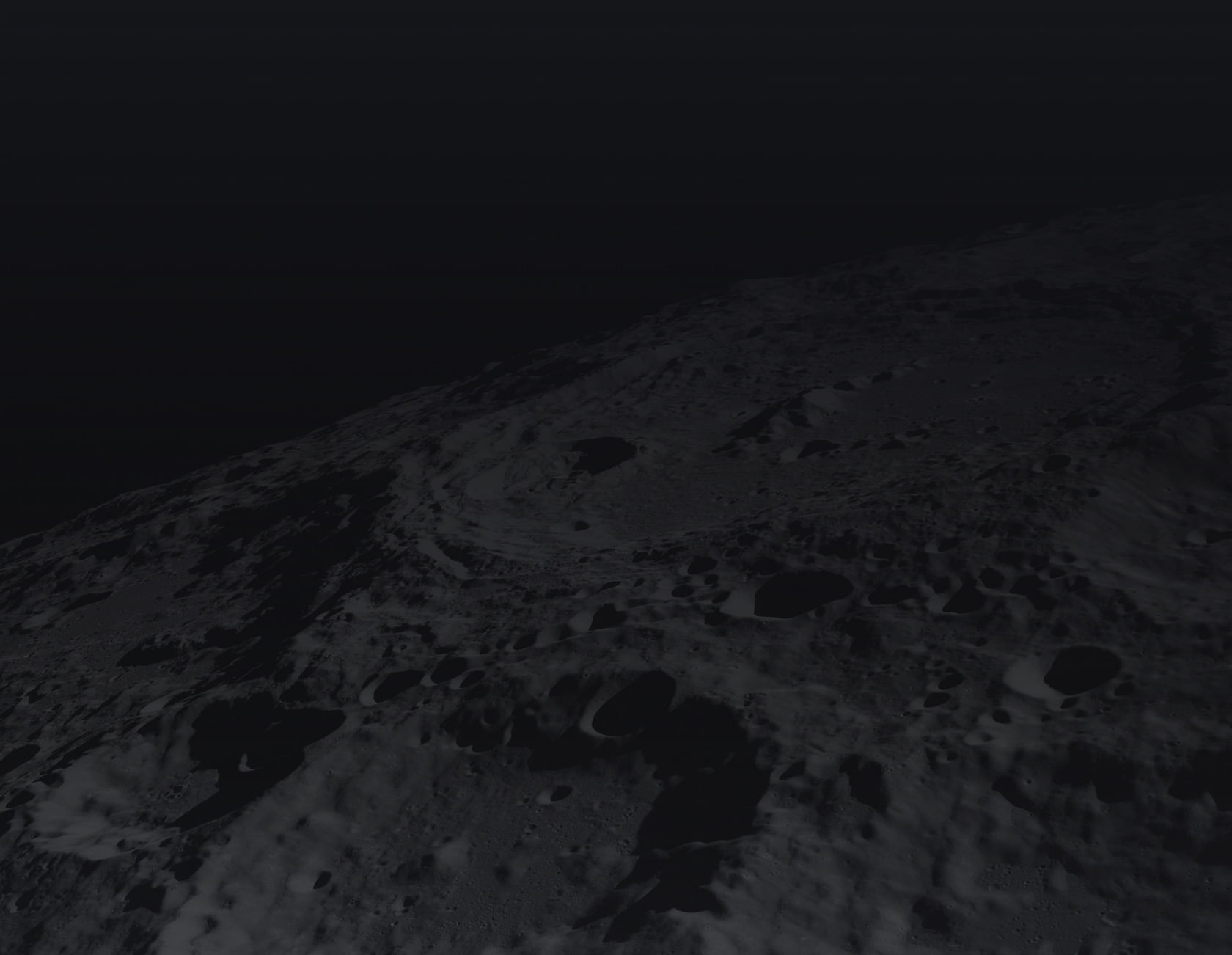

Our Place in Space
$9 Members | $10 Child | $12 Adult
INTUITIVE® Planetarium
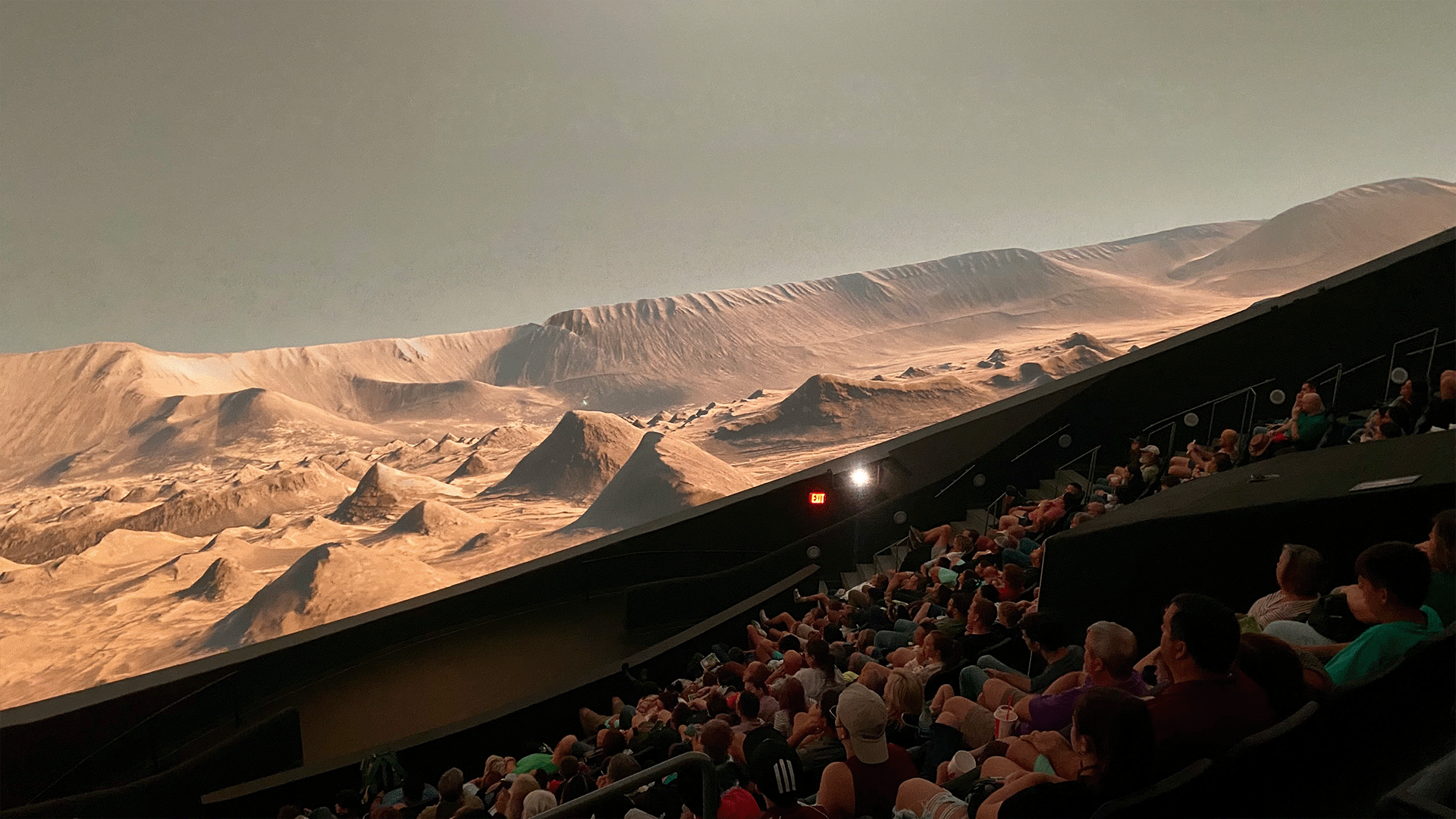
The fan-favorite planetarium show "Our Place in Space" is newly refreshed! Join the INTUITIVE Planetarium on an epic guided tour of our solar system with new images captured by missions like Juno and BepiColombo. Experience our entire solar system with your own personal tour guide - from solar flares at the Sun and expansive canyons on Mars to diamond rain cascading through Neptune's turbulent skies. Zoom out to view the Milky Way and the entire observable universe to gain some perspective of our place in space.
Trailer -->

- Switch skin

‘Our Place in Space’ Sculpture Trail To Touch Down In Liverpool This October
Our Place in Space: Church Street to Otterspool, Liverpool ( 14 October — 6 November 2022).
Liverpool has been announced as an additional stop on the UK tour of Our Place in Space, a recreation of the solar system as a stunning 8.1 km sculpture trail designed by artist Oliver Jeffers, astrophysicist Professor Stephen Smartt and a creative team led by Nerve Centre.
Following popular visits to Derry-Londonderry, Belfast and Cambridge during 2022, where it has been experienced by more than 300,000 people, the trail will touch down in the city from 14 October to 6 November, before returning to Northern Ireland in February 2023 at the Ulster Transport Museum.
Beginning on Church Street in the heart of the city centre and running along the riverside all the way to Otterspool, Our Place in Space is free to visit and features scale models of the Sun and planets, recreated as contemporary art sculptures. Colourful arches house each planet with an arrow and the name of the planet lit up in Las Vegas style lights.
At a scale of 591 million to one, the Sun is 2.35 metres across, Earth is 2.2 centimetres and Pluto just 4 millimetres. The Our Place in Space trail will run until 6 November with events and creative education programmes taking place across the city.
Our Place in Space, part of UNBOXED: Creativity in the UK, invites participants to consider how we might better share and protect our planet in future and what is the difference between ‘us’ and ‘them’? The project aims to bring our solar system down to Earth and send us soaring into the stars to find new perspectives and reconsider what it means to live life on our planet.
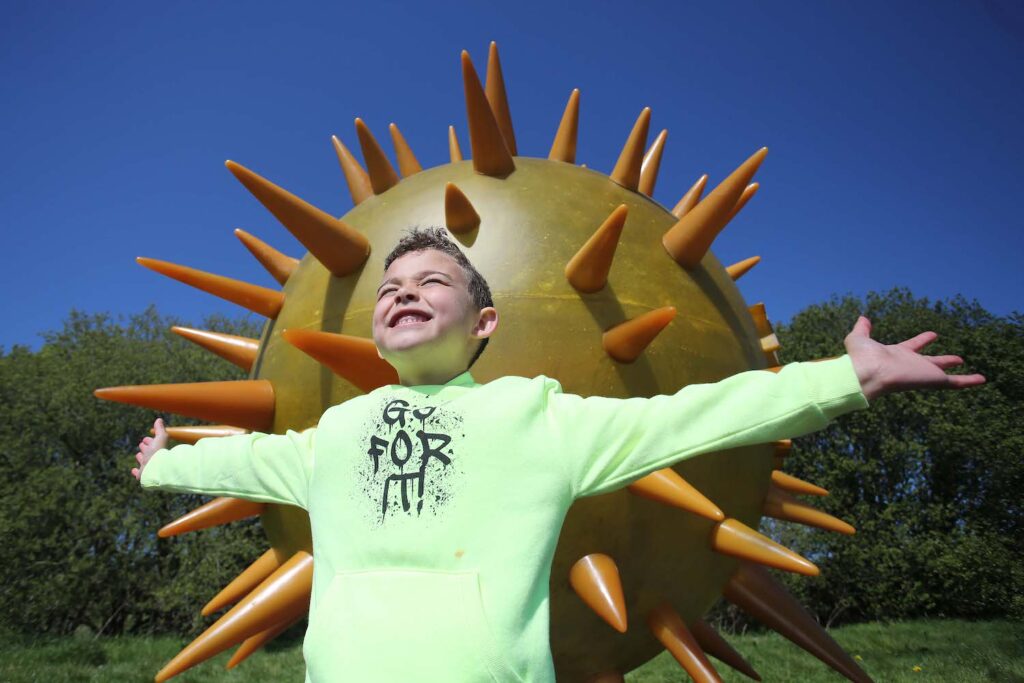
The trail is accompanied by the free Our Place in Space augmented reality app, available on Apple and Android, which allows users across the world to take a journey through the solar system, experiencing the planets in augmented reality and considering 10,000 years of human history on Earth. On the trail, users are invited to collect space souvenirs, including characters from the world of Oliver Jeffers, as well as launch a personalised star into space.
Oliver Jeffers, internationally renowned artist and author said: “For centuries, we’ve defined ourselves by who we are and who we’re not. Which side we choose, on what ground we stand, who and what we fight for. A human story, that lives merely in human minds. But with distance comes perspective – and what happens to our perspective on everything when we look back at Earth from space? Our Place in Space is a playful experiment that asks: What is the difference between ‘us’ and ‘them’? Which side are we on, and if we look back at ourselves from vastness of outer space – alone on our tiny planet, the only one that can harbour life – should there be any ‘sides’ at all?”
Our Place in Space has been designed by Oliver Jeffers with leading astrophysicist Professor Stephen Smartt and a creative team led by Nerve Centre, Northern Ireland’s leading creative media arts centre. Local partners helping to bring Our Place in Space to Liverpool include Culture Liverpool, Liverpool City Council, Liverpool BID Company and Canal & Riverside Trust.
Our Place in Space in Liverpool coincides with the launch of a new children’s book by Oliver, Meanwhile Back on Earth (HarperCollins). Inspired by the themes of Our Place in Space and available from 4 October, the book features a father who takes his two squabbling children on a journey into space to show them what binds us together matters more than what might set us apart. Oliver will be signing copies of his new book at Waterstones, College Lane, Liverpool on Saturday 15 October at 12 noon.
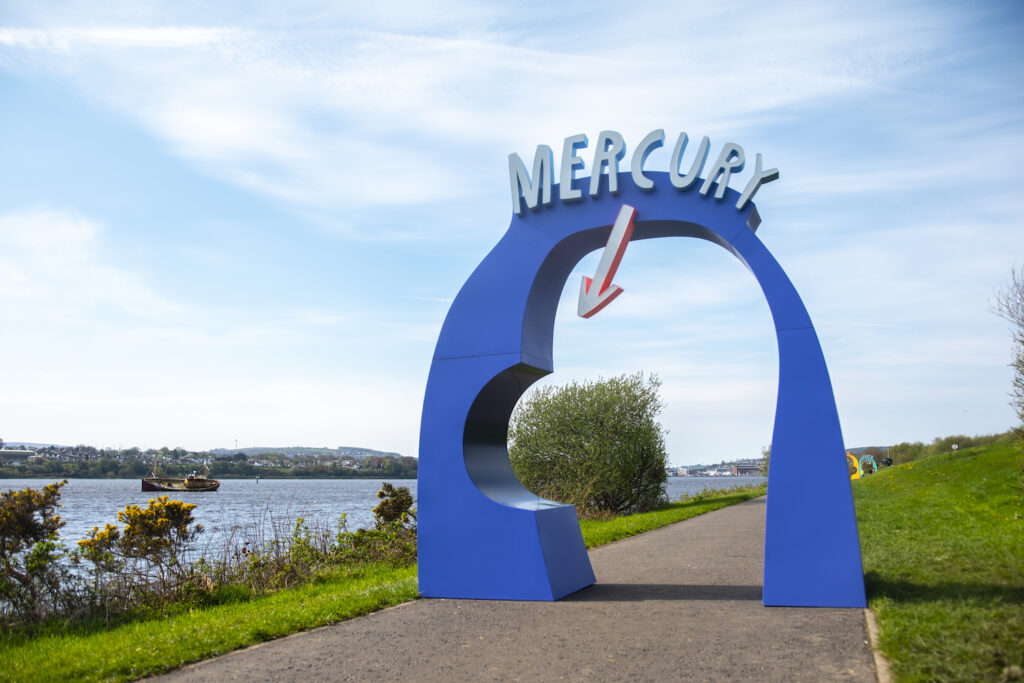
Our Place in Space is one of 10 major creative projects commissioned as part of UNBOXED: Creativity in the UK, a celebration of creativity taking place across the UK this year. UNBOXED features free large-scale events, installations and globally accessible digital experiences in the UK’s most ambitious showcase of creative collaboration.
There are opportunities for local people to become trail guardians while the trail is in Liverpool, helping enhance and support visitors’ experience. For more information visit www.ourplaceinspace.earth .
Our Place in Space is commissioned by UNBOXED and Belfast City Council. Led by Nerve Centre, the project is a collaboration between Astrophysics Research Centre at Queen’s University Belfast, National Museums NI, NI Science Festival, Big Motive, Taunt, Microsoft, Jeffers & Sons, Dumbworld, Live Music Now, Little Inventors, and Urban Scale Interventions.
UNBOXED: Creativity in the UK is funded and supported by the four governments of the UK and is commissioned and delivered in partnership with Belfast City Council, Creative Wales and EventScotland.
For more information visit https://ourplaceinspace.earth/trail/liverpool
Related Articles
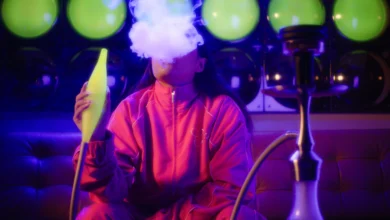
FACT Presents Groundbreaking Art Installations By R.I.P. Germain & Sara Sadik This Summer
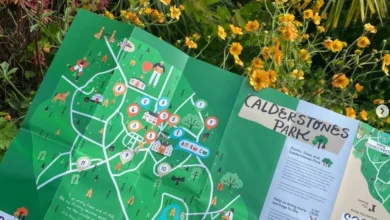
The Reader Launches Heritage Map of Trees From Around The World At Calderstones Park
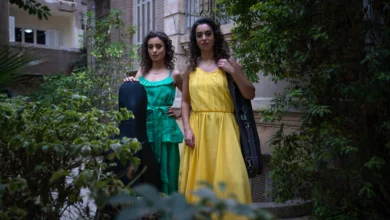
Liverpool Arab Arts Festival Returns This July
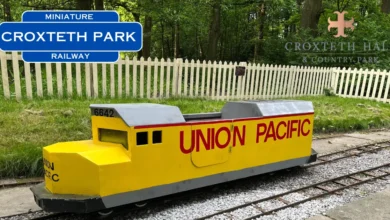
Croxteth Park Miniature Railway Re-Opens This June
Leave a reply cancel reply.
Your email address will not be published. Required fields are marked *
Save my name, email, and website in this browser for the next time I comment.
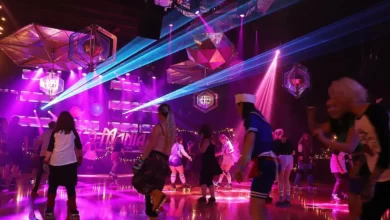
Thanks for coming to Confidentials.
Looks like you might have an AdBlocker on. Please whitelist confidentials.com to continue to our site and enjoy an Ad-Light experience.
'Our Place in Space' Discover the solar system on this free sculpture trail
The trail will touch down in Liverpool from 14 October to 6 November
Liverpool has been announced as an additional stop on the UK tour of Our Place in Space , a recreation of the solar system as an 8.1 km sculpture trail designed by artist Oliver Jeffers, astrophysicist Professor Stephen Smartt and a creative team led by Nerve Centre in Derry-Londonderry.
Bringing the installation to the north west of England will give more people the chance to get involved.
The trail will touch down in Liverpool from 14 October to 6 November, before returning to Northern Ireland in February 2023 at the Ulster Transport Museum .

Beginning on Church Street in the heart of the city centre and running along the riverside all the way to Otterspool, Our Place in Space is free to visit and features scale models of the Sun and planets, recreated as contemporary art sculptures. Colourful arches house each planet with an arrow and the name of the planet lit up in Las Vegas style lights.
At a scale of 591 million to one, the Sun is 2.35 metres across, Earth is 2.2 centimetres and Pluto just 4 millimetres.
Our Place in Space is part of “UNBOXED: Creativity in the UK”, a project which aims to bring our solar system down to Earth and send us soaring into the stars to find new perspectives and reconsider what it means to live life on our planet.
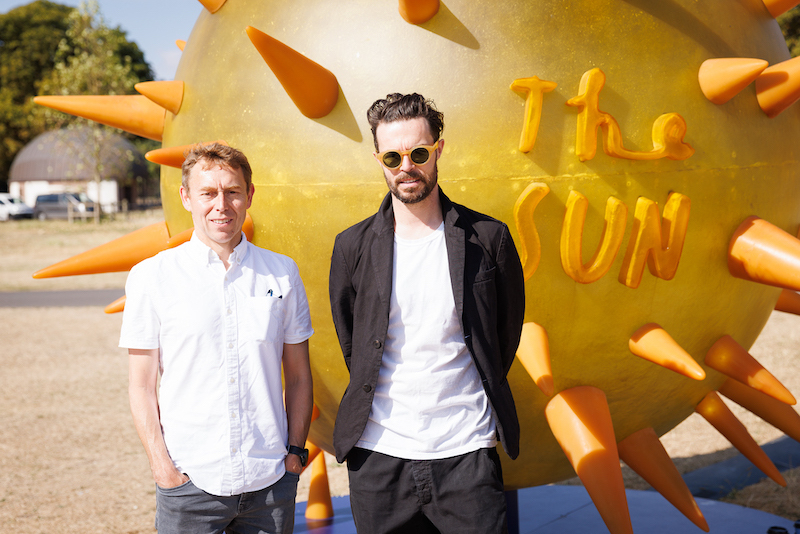
The trail is accompanied by the free Our Place in Space augmented reality app, available on Apple and Android, which allows users across the world to take a journey through the solar system, experiencing the planets in augmented reality and considering 10,000 years of human history on Earth. On the trail, users are invited to collect space souvenirs, including characters from the world of Oliver Jeffers, as well as launch a personalised star into space.
#Liverpool are you ready!?! The solar system is landing 👀🚀 #OurPlaceInSpace pic.twitter.com/SbQQg9AvXM — Our Place in Space (@ourplaceearth) October 10, 2022
David Lewis, executive producer at the Nerve Centre , said, “We are thrilled by the reaction that Our Place in Space has received during its tour of the UK in 2022 and delighted to announce Liverpool as an additional destination for the trail. Bringing the installation to the north west of England will give more people the chance to get involved, to learn about space and to experience the unique world and creativity of Oliver Jeffers.”
Our Place in Space in Liverpool coincides with the launch of a new children's book by Oliver Jeffers, Meanwhile Back on Earth . Oliver will be signing copies of his new book at Waterstones, College Lane, Liverpool on Saturday 15 October at 12 noon.

The Our Place in Space sculpture trail will no doubt be popular with joggers, walking groups and cyclists.
But if 8.1km seems a bit of a stretch, Liverpool Cycle Tours is offering the opportunity to discover the trail by electric motor-assisted E-bike. The independent tour company, which runs regular eco-friendly tours of all Liverpool's landmarks and sites, will be running Our Place in Space tours (instead of the usual South Coast Tour) from 14 October to 4 November, 7pm-9pm priced at £17pp. You can also join Liverpool Cycle Tours on two free afternoon tours in conjunction with Cycling UK on the 5 and 6 November from 2pm-4pm. Visit Liverpool Cycle Tours on social media for more info ( Facebook: Liverpool Cycle Tours ) or call 07986 139531 to book.
The sculpture trail will be accompanied by a programme of events and learning opportunities, including workshops, talks, art sessions, moongazing, stargazing and even a silent disco. For more information visit Our Place in Space.
Read next: Top things to do in Liverpool: October 2022
Read again: river of light art trail returns in autumn with an 'unexpected twist', get the latest news to your inbox.
Get the latest food & drink news and exclusive offers by email by signing up to our mailing list. This is one of the ways that Confidentials remains free to our readers and by signing up you help support our high quality, impartial and knowledgable writers. Thank you!

- In this Story
- our place in space
- liverpool cycle tours
- sculpture trail
- the planets
- family-friendly
- things to do liverpool
‘Countryside elegance’: A stay at Gibbon Bridge
Cunard queen anne officially named on the river mersey, taylor town: a swiftie’s guide to liverpool, most popular, sonic boom: live music in liverpool set for a busy summer, a muddy walk down memory lane: slam dunk 2024 reviewed, treehouse hotel manchester announces mary-ellen mctague’s restaurant pip, dining in the dark, rooftop gherkin gazing and vintage shops galore: 24 hours in london, a chat with hoard producer and mmu lecturer loran dunn.
David Adamson talks to Loran Dunn about getting into filmmaking and the release of her...
An exclusive screening of new Channel 4 drama The Gathering
Harley Young joined acclaimed writer Helen Walsh and cast for a special showing ahead of...
Confidential Safari #2: Tequila, Wooden Spoons and a Well-earned Million
David Adamson reports back on recent goingson from across the city and beyond
Where to watch the Euros 2024
Whether you want big screens, sunshine, a seat, or the golden hat trick of all...

Suggested Searches
- Climate Change
- Expedition 64
- Mars perseverance
- SpaceX Crew-2
International Space Station
- View All Topics A-Z
Humans in Space
Earth & climate, the solar system, the universe, aeronautics, learning resources, news & events.

NASA, Global Astronomers Await Rare Nova Explosion

NASA Scientists Take to the Seas to Study Air Quality

NASA to Change How It Points Hubble Space Telescope
- Search All NASA Missions
- A to Z List of Missions
- Upcoming Launches and Landings
- Spaceships and Rockets
- Communicating with Missions
- James Webb Space Telescope
- Hubble Space Telescope
- Why Go to Space
- Commercial Space
- Destinations
- Living in Space
- Explore Earth Science
- Earth, Our Planet
- Earth Science in Action
- Earth Multimedia
- Earth Science Researchers
- Pluto & Dwarf Planets
- Asteroids, Comets & Meteors
- The Kuiper Belt
- The Oort Cloud
- Skywatching
- The Search for Life in the Universe
- Black Holes
- The Big Bang
- Dark Energy & Dark Matter
- Earth Science
- Planetary Science
- Astrophysics & Space Science
- The Sun & Heliophysics
- Biological & Physical Sciences
- Lunar Science
- Citizen Science
- Astromaterials
- Aeronautics Research
- Human Space Travel Research
- Science in the Air
- NASA Aircraft
- Flight Innovation
- Supersonic Flight
- Air Traffic Solutions
- Green Aviation Tech
- Drones & You
- Technology Transfer & Spinoffs
- Space Travel Technology
- Technology Living in Space
- Manufacturing and Materials
- Science Instruments
- For Kids and Students
- For Educators
- For Colleges and Universities
- For Professionals
- Science for Everyone
- Requests for Exhibits, Artifacts, or Speakers
- STEM Engagement at NASA
- NASA's Impacts
- Centers and Facilities
- Directorates
- Organizations
- People of NASA
- Internships
- Our History
- Doing Business with NASA
- Get Involved
- Aeronáutica
- Ciencias Terrestres
- Sistema Solar
- All NASA News
- Video Series on NASA+
- Newsletters
- Social Media
- Media Resources
- Upcoming Launches & Landings
- Virtual Events
- Sounds and Ringtones
- Interactives
- STEM Multimedia
NASA Watches Mars Light Up During Epic Solar Storm
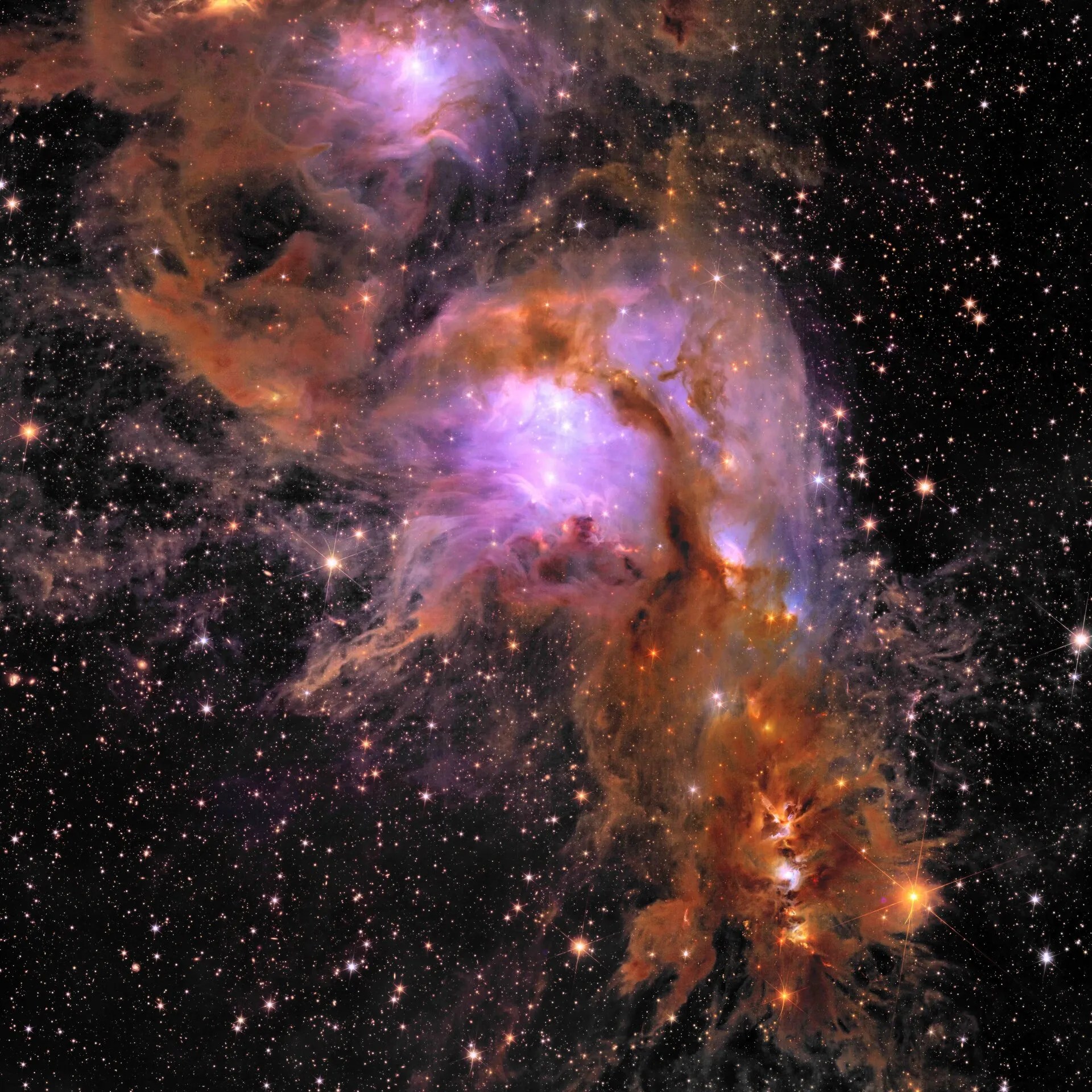
Amendment 19: D.18 Euclid General Investigator Program: Names must be omitted from References.

PACE Celebrates National Ocean Month With Colorful Views of the Planet

NASA Astronauts Practice Next Giant Leap for Artemis

Former Astronaut David R. Scott

Space Station Research Advances NASA’s Plans to Explore the Moon, Mars

NASA Mission Flies Over Arctic to Study Sea Ice Melt Causes

Webb Finds Plethora of Carbon Molecules Around Young Star

Solid State Quantum Magnetometers—Seeking out water worlds from the quantum world

The Big Event, 2025

Black Hole Week
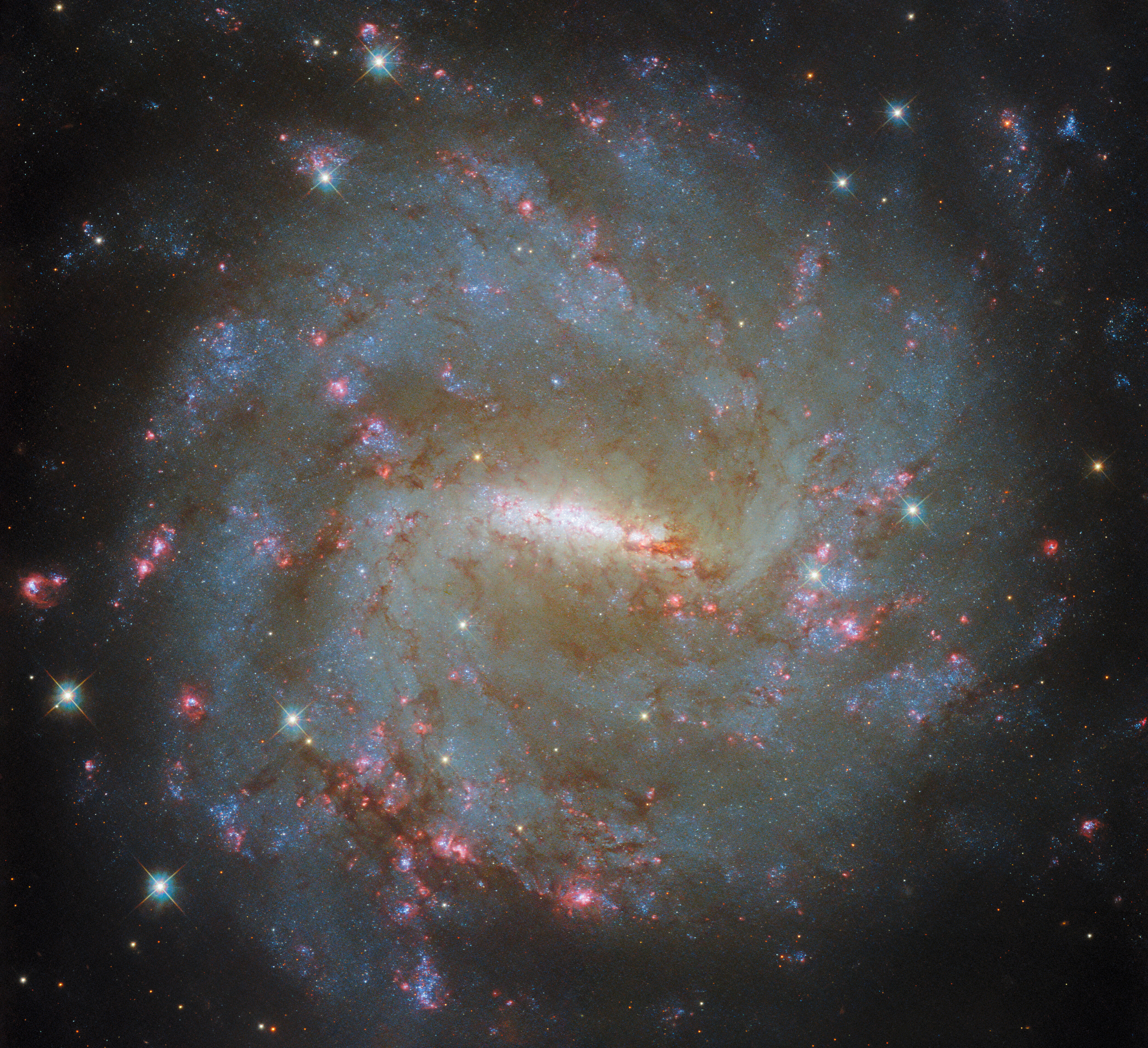
Hubble Examines a Barred Spiral’s Light
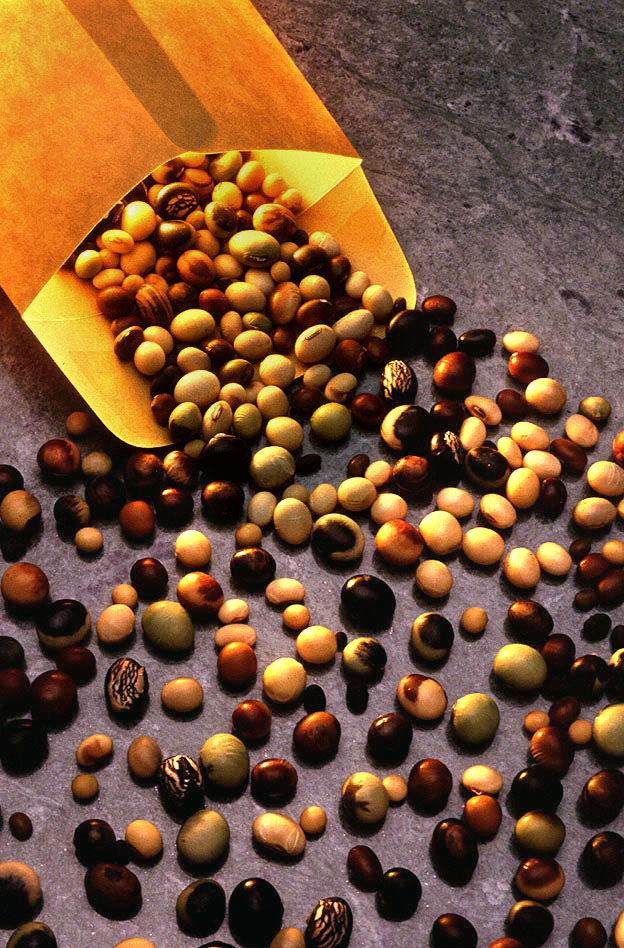
Amendment 20: F.20 MOSAICS Seed Funding formerly SMD Bridge Program Seed Funding Final Text.

ARMD Solicitations

Winners Announced in Gateways to Blue Skies Aeronautics Competition

NASA, Industry to Start Designing More Sustainable Jet Engine Core

Food Safety Program for Space Has Taken Over on Earth

B.10 Heliophysics Flight Opportunities Studies Correction

C.12 Planetary Instrument Concepts for the Advancement of Solar System Observations POC Change

Artemis Generation Shines During NASA’s 2024 Lunabotics Challenge

NASA Marshall Engineer Receives AIAA Honors Award

Meet the Simunauts: Ohio State Students to Test Space Food Solutions for NASA

Diez maneras en que los estudiantes pueden prepararse para ser astronautas

Astronauta de la NASA Marcos Berríos

Resultados científicos revolucionarios en la estación espacial de 2023
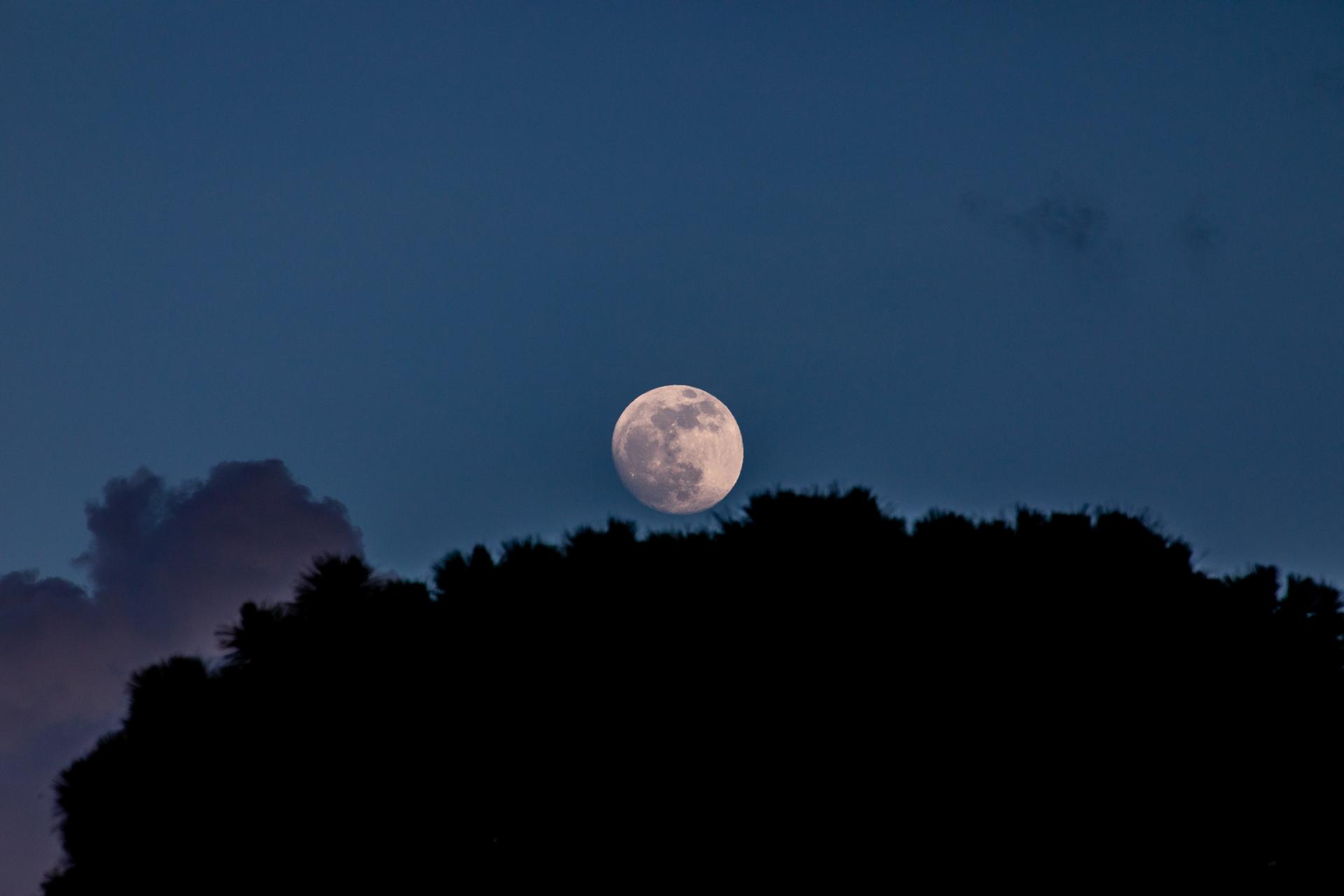
NASA at Home: Virtual Tours and Apps
NASA is exploring our solar system and beyond, uncovering worlds, stars, and cosmic mysteries near and far with our powerful fleet of space and ground-based missions.
Explore our facilities. View our laboratories. Enter our operations control centers.
We invite you to tour NASA virtually from the comfort of your home or convenience of your mobile device.
RS-25 Rocket Engine Testing : NASA’s Stennis Space Center in Mississippi conducted a series of RS-25 rocket engine hot fire tests for NASA’s Space Launch System, which is being built for missions beyond low-Earth orbit that will carry crew and cargo to the Moon and destinations beyond.
Commercial Crew Program 360-Degree Virtual Reality Tour : NASA’s Commercial Crew Program works with commercial partners to launch astronauts to the International Space Station from U.S. soil on American-built rockets and spacecraft . These immersive videos share the story of groundbreaking innovation borne of this government-industry partnership.
International Space Station Tour : The International Space Station is a unique scientific platform where astronauts conduct experiments across multiple disciplines of research – including Earth and space science, biology, human physiology, physical sciences, and technology demonstrations – that cannot be performed anywhere on Earth. In 2020, the station celebrated 20 years of a continuous human presence aboard the orbiting laboratory.
Operations Centers
Explore Goddard’s Clean Room : James Webb Space Telescope’s Communications Lead Laura Betz takes us behind the scenes inside the world’s largest clean room at NASA’s Goddard Space Flight Center in Greenbelt, Maryland. Explore where the Hubble Space Telescope was built and where its successor – the James Webb Space Telescope – was assembled . See the special gowning process engineers go through on a daily basis to enter this super clean environment. This tour gives you a 360-degree look from the unique filter wall to the storage of Webb’s 18 gold-plated mirrors. Check out Goddard’s Space Environment Simulator, a massive thermal vacuum chamber in which scientists and engineers cryotested the heart of the telescope, ISIM, by lowering the temperature of the structure to 42 Kelvin (-384.1 Fahrenheit or -231.1 Celsius) and below to ensure that it can withstand the frigid temperatures Webb will face 1 million miles out in space.
Robotic Operations Center (ROC) : This 360-degree view of Goddard’s Robotic Operations Center (ROC) shows off its unique hexapod robot, which helps engineers simulate the way a satellite moves in space. Drag the photo to explore the rest of the state-of-the-art facility. The ROC acts as an incubator for satellite servicing technologies that will allow for the repair, refueling, and upgrading of spacecraft. In this lab, robotic capabilities are tested in spacelike conditions before they are put to action in orbit.
Solar System
Planets of Other Stars
NASA’s Exoplanet Excursions : A guided journey through the amazing TRAPPIST-1 star system, known to be the home of seven Earth-size exoplanets orbiting a star that is only a little larger than Jupiter. This also includes tours of the Spitzer Space Telescope and the ability to control the telescope yourself.
Exoplanet Travel Bureau : Explore 360-degree visualizations of the surfaces of planets of other stars (and download free posters!). This works on desktops and mobile devices, and it is optimized for such viewers as Google Cardboard.
NASA Centers (with virtual tours)
NASA’s Ames Research Center Virtual Tour : NASA’s Ames Research Center in Silicon Valley, California, has led NASA in conducting world-class research and development in aeronautics, exploration technology, and science aligned with the center’s core capabilities.
NASA’s Armstrong Flight Research Center Virtual Tours : NASA’s Armstrong Flight Research Center in Edwards, California, is NASA’s primary center for high-risk, atmospheric flight research and test projects. For almost 75 years, research at Armstrong has led to major advancements and breakthroughs in the design and capabilities of many state-of-the-art civil and military aircraft.
NASA’s Glenn Research Center Virtual Tours : NASA’s Glenn Research Center in Cleveland designs and develops innovative technology to advance NASA’s missions in aeronautics and space exploration.
NASA’s Jet Propulsion Laboratory Virtual Tour : NASA’s Jet Propulsion Laboratory in Pasadena, California, is humanity’s leading center for exploring where humans cannot yet reach. Its spacecraft have flown to every planet and the Sun in a quest to understand our place in the universe, and to search for the possibility of life beyond Earth.
NASA’s Johnson Space Center Virtual Tour : NASA’s Johnson Space Center in Houston is home to mission control and astronaut training. It also leads International Space Station operations and expeditions, development of the Orion spacecraft, NASA’s Gateway outpost program, and numerous other advanced human exploration projects.
NASA’s Langley Research Center Virtual Tours : NASA’s Langley Research Center in Hampton, Virginia, works to make revolutionary improvements to aviation, expand understanding of Earth’s atmosphere and develop technology for space exploration. It was also where NASA mathematician Katherine Johnson worked.
Featured Apps
NASA selfie app : Put your photo in a virtual spacesuit in front of some of NASA’s most captivating space images. Access the NASA Selfie app for iOS or the NASA Selfie app for Google .
NASA app : This app offers news and multimedia from around the agency ; other applications focus on individual NASA projects or research areas.
Aircraft and Aeronautics
Aeronautics augmented reality app : Learn about NASA’s X-57 Maxwell, X-59 QueSST, and G-III Gulfstream aircraft through an app that brings them onto your mobile phone.
“Next Stop: The Stratosphere” : Explore SOFIA, NASA’s flying observatory, a Boeing 747SP aircraft modified to carry a 106-inch telescope. Scientists aboard SOFIA study stars, black holes, and more while flying between 38,000 and 45,000 feet.
Spacecraft augmented reality app : Learn about and interact with a variety of spacecraft that explore our solar system, study Earth, and observe the universe.
Browse more NASA apps and apps created by NASA’s Jet Propulsion Laboratory .
We encourage you to visit these sites for additional activities and resources:
NASA’s Artemis Program , NASA’s STEM Engagement , and NASA Kids’ Club
If you are interested in having a NASA speaker give a virtual presentation to your class or organization, visit the Speakers Bureau website and submit a request form.
Discover More Topics From NASA
NASA At Home
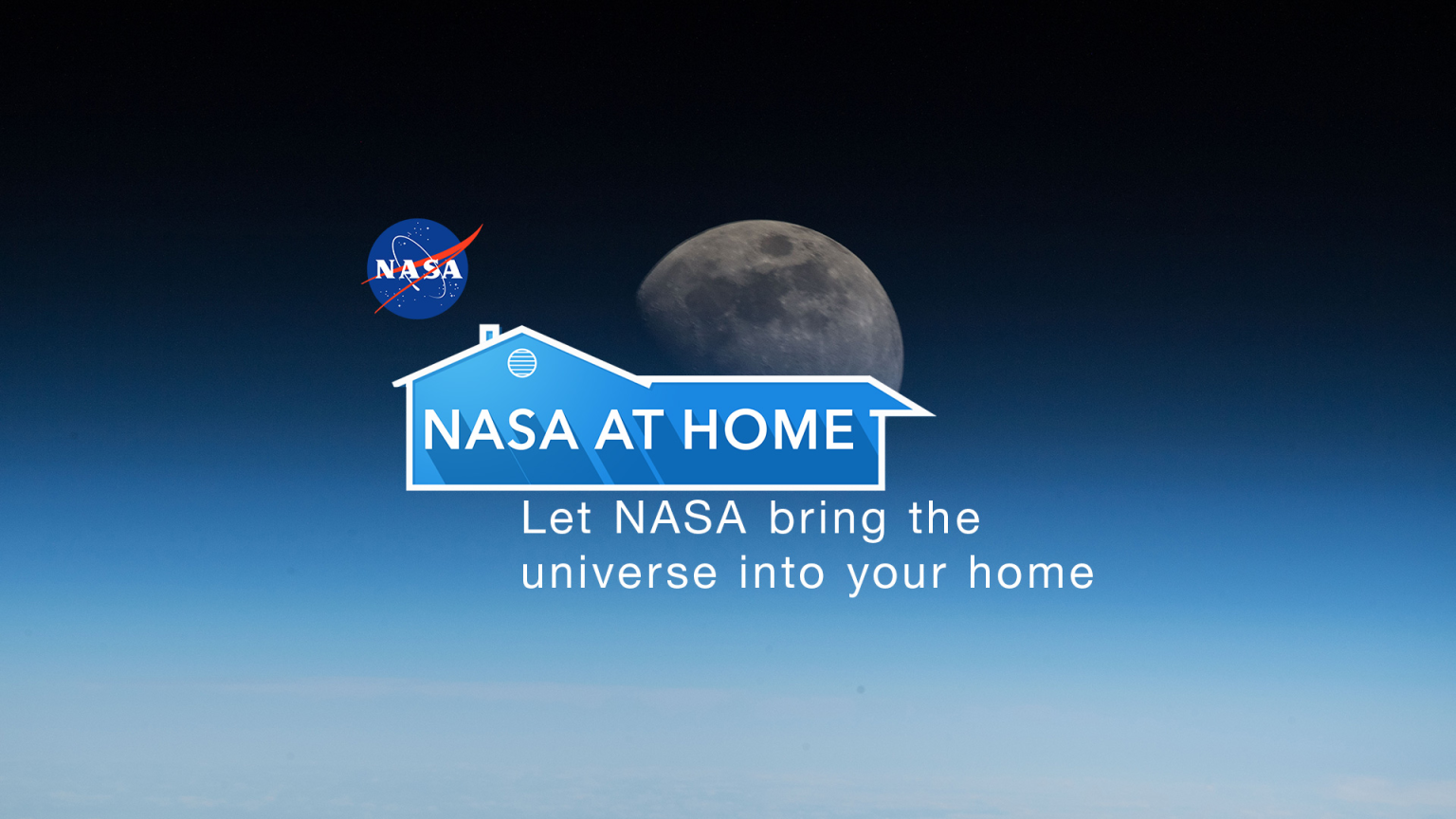
NASA at Home: For Kids and Families
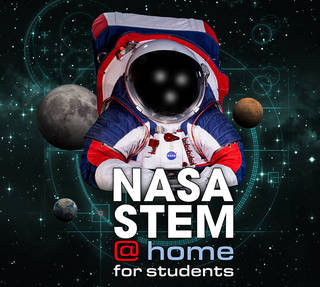
NASA at Home: Be a Scientist
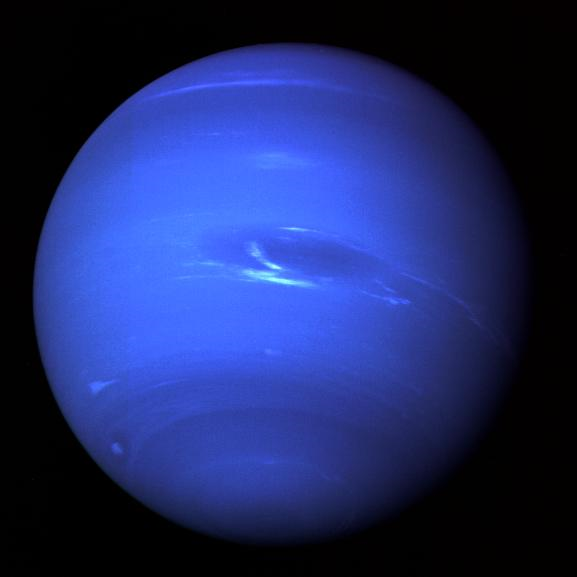
NASA at Home – E-books
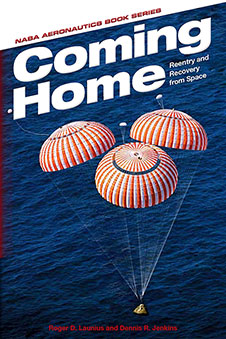
Sign up to our free weekly newsletter to keep up to date with what's on in the city & the region!
Search Uncover
- What’s on
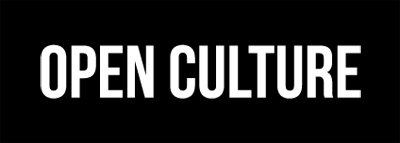
This event has ended
Our place in space.
Liverpool has been announced as an additional stop on the UK tour of Our Place in Space, a recreation of the solar system as a stunning 8.1 km sculpture trail designed by artist Oliver Jeffers, astrophysicist Professor Stephen Smartt and a creative team led by Nerve Centre.
Following popular visits to Derry-Londonderry, Belfast and Cambridge during 2022, where it has been experienced by more than 300,000 people, the trail will touch down in the city from 14 October to 6 November, before returning to Northern Ireland in February 2023 at the Ulster Transport Museum.
Beginning on Church Street in the heart of the city centre and running along the riverside all the way to Otterspool, Our Place in Space is free to visit and features scale models of the Sun and planets, recreated as contemporary art sculptures. Colourful arches house each planet with an arrow and the name of the planet lit up in Las Vegas style lights.
At a scale of 591 million to one, the Sun is 2.35 metres across, Earth is 2.2 centimetres and Pluto just 4 millimetres. The Our Place in Space trail will run until 6 November with events and creative education programmes taking place across the city.
Our Place in Space, part of UNBOXED: Creativity in the UK, invites participants to consider how we might better share and protect our planet in future and what is the difference between ‘us’ and ‘them’? The project aims to bring our solar system down to Earth and send us soaring into the stars to find new perspectives and reconsider what it means to live life on our planet.
The trail is accompanied by the free Our Place in Space augmented reality app, available on Apple and Android, which allows users across the world to take a journey through the solar system, experiencing the planets in augmented reality and considering 10,000 years of human history on Earth. On the trail, users are invited to collect space souvenirs, including characters from the world of Oliver Jeffers, as well as launch a personalised star into space.
Oliver Jeffers, internationally renowned artist and author said: “For centuries, we’ve defined ourselves by who we are and who we’re not. Which side we choose, on what ground we stand, who and what we fight for. A human story, that lives merely in human minds. But with distance comes perspective – and what happens to our perspective on everything when we look back at Earth from space? Our Place in Space is a playful experiment that asks: What is the difference between ‘us’ and ‘them’? Which side are we on, and if we look back at ourselves from vastness of outer space – alone on our tiny planet, the only one that can harbour life – should there be any ‘sides’ at all?”
Our Place in Space has been designed by Oliver Jeffers with leading astrophysicist Professor Stephen Smartt and a creative team led by Nerve Centre, Northern Ireland’s leading creative media arts centre. Local partners helping to bring Our Place in Space to Liverpool include Culture Liverpool, Liverpool City Council, Liverpool BID Company and Canal & Riverside Trust.
Our Place in Space in Liverpool coincides with the launch of a new children’s book by Oliver, Meanwhile Back on Earth (HarperCollins). Inspired by the themes of Our Place in Space and available from 4 October, the book features a father who takes his two squabbling children on a journey into space to show them what binds us together matters more than what might set us apart. Oliver will be signing copies of his new book at Waterstones, College Lane, Liverpool on Saturday 15 October at 12 noon.
Our Place in Space is one of 10 major creative projects commissioned as part of UNBOXED: Creativity in the UK, a celebration of creativity taking place across the UK this year. UNBOXED features free large-scale events, installations and globally accessible digital experiences in the UK’s most ambitious showcase of creative collaboration.
There are opportunities for local people to become trail guardians while the trail is in Liverpool, helping enhance and support visitors’ experience. For more information visit www.ourplaceinspace.earth .
Our Place in Space is commissioned by UNBOXED and Belfast City Council. Led by Nerve Centre, the project is a collaboration between Astrophysics Research Centre at Queen’s University Belfast, National Museums NI, NI Science Festival, Big Motive, Taunt, Microsoft, Jeffers & Sons, Dumbworld, Live Music Now, Little Inventors, and Urban Scale Interventions.
UNBOXED: Creativity in the UK is funded and supported by the four governments of the UK and is commissioned and delivered in partnership with Belfast City Council, Creative Wales and EventScotland.
Photo Credit: Our Place In Space – Earth+Moon – Derry-Londonderry. Our Place in Space part of UNBOXED: Creativity in the UK Courtesy of Nerve Centre, 2021
You may also like
Africa oyé 2024.
Sefton Park
A Lovely Poetry Festival 2024
In the park, la feria 2024.
Various Liverpool venues
Keep in touch

- Nov 5, 2022
'Our Place In Space': Take A Walk This Weekend Through A Unique Solar System Sculpture Trail
Weekend walks: final weekend to explore the solar system sculpture trail, 'our place in space'.

EXPLORE the fabulous Our Place in Space Sculpture Trail on its final weekend before it jets off into orbit. The Liverpool City Region was selected as part of a UK tour to host a recreation of the solar system as a stunning 5 Mile Sculpture Trail designed by renowned artist Oliver Jeffers, Astrophysicist Professor Stephen Smartt and a creative team led by Nerve Centre.
Beginning on Church Street in the heart of Liverpool City Centre and running along the riverside all the way to Otterspool, Our Place in Space is free to visit and features scale models of the Sun and planets, recreated as contemporary art sculptures. Colourful arches house each planet with an arrow and the name of the planet lit up in Las Vegas style lights.
The trail is accompanied by the free Our Place in Space augmented reality app , available on Apple and Android , which allows users across the world to take a journey through the solar system, experiencing the planets in augmented reality and considering 10,000 years of human history on Earth. On the trail, users are invited to collect space souvenirs, including characters from the world of Oliver Jeffers, as well as launch a personalised star into space.
'As the solar system takes over our city centre we are celebrating the return of our major festival River of Light, welcoming the World Gymnastic Championships 2022 and are the centre of the art world as Tate Liverpool plays host to The Turner Prize.' - Councillor Harry Doyle.
Liverpool City Council’s Cabinet Member for Culture and Visitor Economy, Councillor Harry Doyle, said: 'We are delighted that UNBOXED have chosen Liverpool as the final stop for Our Place In Space this year. As the solar system takes over our City Centre we are celebrating the return of our major festival River of Light, welcoming the World Gymnastic Championships 2022 and are the centre of the art world as Tate Liverpool plays host to The Turner Prize. Liverpool is the only place to be this Autumn for brilliant, free entertainment.'

The Sculpture Trail runs from Church Street in Liverpool City Centre and runs all the way to Otterspool. The final day of the experience is Sunday the 6th of November so there is still time to explore the trail!
- What's On?
- Life In Liverpool
Related Posts
John Canning Yates' Releases New Evocative Single 'Until You Find Me (Song For Margaret Hardman)'
'Beyond Van Gogh': Four Week Countdown To The Acclaimed Van Gogh Spectacular On Liverpool Waterfront
Legendary Liverpool Restaurant, The Tavern Co, Sees In The Summer With Great Value In Style
Opmerkingen
Inspiration
- Unique Cambridge
From making your own gin with one of the world’s most innovative distilleries, to trying the best of the Cambridge food scene – here are some uniquely Cambridge experiences to seek out during your stay
- Art & Exhibitions
- Comedy & Entertainment
- Family Friendly
- List Your Event
- Museums & Galleries
- Universities & Colleges
- Theatres & Cinemas
- Parks & Open Spaces
- Walking & Cycling Routes
- Food & Drink
- Key Sites to Visit
- List Your Business
- Explore Cambridge's Colleges
- Accommodation
- Travelling into Cambridge
- Driving into Cambridge
- City Ambassadors
- Venue Finding Service
- Cambridge for Couples
- Dog-friendly Cambridge
- Family Fun in Cambridge
Welcome to our new website! If you are a local business and would like to add an event or business, please follow this link

Our Place in Space | Guided Tours of the Solar System
Join us for a guided tour of the solar system on the spectacular Midsummer Common. Our tours are tailored to different interests and abilities, with something for everyone!
- 30th July 2022 - 18th August 2022
- 12:00 pm - 8:30 pm
Centered around an epic scale model of the solar system designed by the artist Oliver Jeffers with scientist Professor Stephen Smartt and a creative team led by Nerve Centre, Our Place in Space is a three-dimensional sculpture trail, interactive AR app and exciting learning and events programme. Jump to Jupiter, visit Venus and swing by the Sun without ever leaving Earth!
Find the right guided tour for you below:
Family Tours with our Creative Learning Team
This tour from our experienced creative learning team will take you on a journey from the Sun to Mars, and has been created as fun for all the family.
Tuesday 9 August @ 10am–11am
Wednesday 10 August @ 10am–11am
Thursday 11 August @ 2pm–3pm
Friday 12 August @ 2pm–3pm
Family Tours with Dr Matthew Bothwell
Take a tour from the Sun to Saturn with Dr Matthew Bothwell, and learn all about our Solar System. This is an opportunity for you to have a conversation with Matthew and ask all your space related questions.
Saturday 6 August @ 12pm–1.30pm
Thursday 18 August @ 7pm–8.30pm
Interstellar Tours with Hunt & Darton
A chance to see the planets and city from a different angle with enigmatic duo Hunt & Darton.
Saturday 30 July @ 12pm and 4pm
Sunday 31 July @ 12pm and 2pm
Please visit our website to book your space in advance. Spaces are limited.
- Disabled Accessibility
Accessibility Facilities
- Accessibility Guide
- Assistance dogs welcome
- Staff available to assist
- Wheel chair accessible
Did you know?
Lord Byron, the famous Romantic poet, is said to have kept a bear while he was a student at Trinity College in the 1800s.
- Exhibit Description
Home Beyond Earth
New exhibit opening June 2024!

Imagine living in a place where the night sky is always clear and sparkles with countless stars, and every day the entire world shines outside your windows. On June 8, 2024, The Museum of Flight premieres Home Beyond Earth, an immersive new exhibition that goes to the heart of the human experience of living in space.
With a focus on space stations past, present and future, Home Beyond Earth features over fifty artifacts, models, space-flown objects and uniforms. Digital tokens allow visitors to make their own journey through the exhibit and personalize their imagined life in a space station of their choice. The exhibit’s vivid digital projections and over a dozen interactive elements help visitors enjoy and realize the dreams and realities of living and working in a place orbiting our planet. Today’s new era of spaceflight promises space hotels, orbiting cities and industrial jobs on the Moon.
Home Beyond Earth shows how far we have come to realize this vision, and helps us ponder a future that may, or may not, be for you.
Exhibit opens June 8, 2024!
Exhibit is free with Museum Membership and included with general admission. This exhibit was created by The Museum of Flight.
Home Beyond Earth Programming Throughout the run of the exhibition the Museum will offer provocative programs that bring the challenges of living in space down to Earth. Astronauts, space industry leaders, authors and futurists will cover topics ranging from sci-fi and living in space with disabilities, to space archeology and space law. Home Beyond Earth will also delightfully spice up the Museum’s seasonal events and weekly family activities throughout the year.
Join us for Opening Day on June 8! Stay in orbit all day with space station-themed workshops, presentations and expert guests.
Opening Day Event Info
Red Barn Special Exhibits Gallery (First Floor)

sign up for our newsletter
This website may use cookies to store information on your computer. Some help improve user experience and others are essential to site function. By using this website, you consent to the placement of these cookies and accept our privacy policy.
Where and when to see the northern lights in 2024
Now is the perfect time to plan a northern lights trip

- North America
- Viewing from home
When to see the northern lights
Northern lights forecasts.
Nothing quite beats seeing the northern lights, or aurora borealis, in all their glory. But where and when can you see them?
Lucky for us the next few years are going to be the best for seeing the northern lights due to heightened solar activity as we approach "solar maximum" in the current solar cycle.
So if you are planning a trip to see the northern lights now is the time to do it. Not sure where to go? Here we have rounded up some of the best places to see auroras around the world.
Related: Aurora colors: What causes them and why do they vary?
The northern lights are created when energized particles from the sun slam into Earth's upper atmosphere at speeds of up to 45 million mph (72 million kph), but our planet's magnetic field protects us from energetic assault.
As Earth's magnetic field redirects the particles toward the poles the dramatic process transforms into a cinematic atmospheric phenomenon that dazzles and fascinates scientists and skywatchers alike. The southern lights, or aurora australis, are produced in the same way.
We asked Tom Kerss, astronomy, author and northern lights expert what three pieces of advice he would give to someone wanting to see the northern lights.
Tom Kerss is an astronomer and the author of numerous best-selling books about the night sky for both adults and children, including Northern Lights , Diamonds Everywhere and the Starry Stories Series .
What are your top tips for seeing the northern lights?
1. Unless you're lucky enough to have the lights come to you, seeing auroras is a matter of being in the right place at the right time. Fortunately, we can forecast where and when they are likely to become visible, so you can increase your odds. Being in Norway between late September and mid-March, during the darkest, moonless nights, and being mobile will greatly improve your chances.
2. It's important to persevere! The arctic nights can be extremely cold, but you'll need to push yourself and stay up late to make the most of the auroral zone. On good nights, the Lights are visible as soon as it gets dark, but you should try to stay up until after midnight.
3. Taking your own photographs of the Northern Lights is so alluring, and very rewarding. Today's cameras — including smartphones — capture super, colourful and clear shots. But try not to get too carried away. Make sure you absorb the luminosity, colour and subtle movement of the Lights with your own eyes. You'll make pictures in your mind that you can't share, but you can feel!
What is your favorite aurora fact?
My favorite fact about auroras is that they appear not only on Earth, but on many other worlds. Every planet in the Solar System (except Mercury) exhibits auroras, as do several moons and even a comet! Moreover, we've measured auroras on other stars, and possibly even exoplanets, and they can teach us about the environments and interiors of these remote worlds.
Where to see the northern lights in Europe
If you live in Europe, the easiest thing to do is head to the far northern parts of Norway, Sweden, Iceland and Finland. Many local people speak English in those regions and there are lots of tours available.
Wherever you plan on going, bear in mind that cloudy skies may make it difficult to catch auroras on any one particular night. If possible, leave yourself extra time to accommodate inclement weather.
Here is a list of some possible European northern lights trips and tour providers:
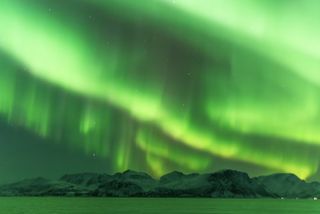
Hurtigruten Coastal Express
Bergen — Kirkenes — Bergen
Price: From £2942pp, includes breakfast, lunch and dinner + exclusive excursion to the Tromsø planetarium.
Duration: 12 days
Northern Lights Promise : If there is no recorded sighting of the northern lights while sailing, Hurtigruten will give guests a free 6- or 7-day Classic Voyage to redeem the following season. Terms and Conditions apply.
If you're interested in booking the Astronomy Voyage head over to Hurtigruten's official site .
If you're looking for the ultimate skywatching and cultural experience in Norway, we recommend taking the Hurtigruten Coastal Express along the stunning Norwegian Coast.
There are a number of voyages available as well as specialized " Astronomy Voyages " that include additional astronomy lectures from an onboard astronomer and a visit to Tromsø's impressive planetarium and science center.
You can read more about what it's like to experience the Hurtigruten Astronomy Voyage in our article .
The Northern Lights Company
The Northern Lights Company based in stunning Vesterålen, Norway, offers various 4, 5 or 7-night northern lights trips between September and April.
All tours include transport, accommodation, aurora chasing by night as well as daytime activities so guests not only get to see beautiful Norway but also experience it.
From eagle safaris and visits to the local Sami Reindeer farm to aurora research at the Andøy Space Centre and photography trips. There is something for everyone with the Northern Lights Company.
Visit Tromsø
Visit Tromsø sells aurora-watching trips around the city of Tromsø in Norway. The largest urban area in Northern Norway and the world's third largest city above the Arctic Circle, Tromsø lies just within the Northern Lights Oval, the region above Earth's geomagnetic North Pole where aurora displays are most likely to occur.
Visit Tromsø sells 'aurora chases,' dynamic night hunts for aurora displays in the aurora season between September and April, and slower-paced 'experiences' such as dog-sled and boat trips and overnight stays at aurora hotspots. Tromsø can be accessed by plane from Norway's capital Oslo; adventure seekers are sometimes rewarded by an aurora display during their incoming flight.
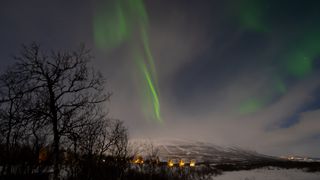
Lights over Lapland
Lights over Lapland sells a range of aurora-watching packages that take skywatchers to Sweden's northernmost region, Lapland. Lapland straddles the border between Sweden and Finland, with both sides offering excellent aurora viewing opportunities in winter months and the midnight sun experience in summer.
Lights over Lapland operates on the Swedish side of the border with most of its tours aiming for Abisko National Park (not far from the Esrange Space Center which runs rocket tests for ESA and is gearing up to perform the first satellite launches from continental Europe).
"Abisko has developed a reputation for being the No. 1 aurora-watching destination on the planet, due to the fact that it is located in a very special microclimate with less precipitation than any other location on Earth that is located within the aurora zone," photographer Chad Blakley, who is a co-founder of Lights over Lapland, told Space.com via email.
If you want to see what it's like to chase auroras in Swedish Lapland check out our article on what it's like to put Abisko's "cloud-busting weapon" to the test .

Guide to Iceland
Guide to Iceland sells a range of aurora-watching packages on the North Atlantic island, including bus tours, boat tours and hunting trips. Situated just below the Arctic Circle, Iceland provides a decent chance of catching the Northern Lights during winter months. If that doesn't work out, you can instead relax in the island's powerful natural hot springs and outdoor pools.
Viatour northern lights night tour from Reykjavik
Viatour operates evening aurora-watching trips from Iceland's capital Reykjavik. The bus tour takes tourists across the island to its most popular aurora spots. The operator says that those who don't get to see the northern lights during their trip can join again at no additional cost.
Arctic Adventures
Arctic Adventures offers a large number of tours from day trips to multi-day excursions to experience the very best of Iceland. There is a range of northern lights tours available whether it be traveling by bus, boat, or multi-day hiking tours. Experience the majestic northern lights with Arctic Adventures and make memories that will last a lifetime.
Where to see the northern lights in North America
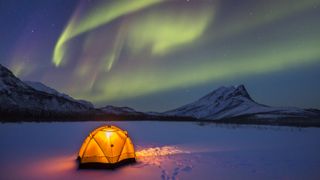
If you're interested in trying to photograph the northern lights check out our guides on how to photograph auroras , as well as the best equipment for aurora photography .
There are plenty of options for good aurora viewing in North America. While far-eastern Canada tends to be cloudy, the shore of the Hudson Bay, the northern Canadian towns of Yellowknife or Whitehorse, or the west coast of Alaska are usually good bets. (The city of Fairbanks itself can be a great choice for seeing northern lights without needing to go too far in the wilderness.)
Alaska Tours
Alaska Tours offers a range of packages from one-day trips to week-long tours that take visitors past the Arctic Circle to the heart of Alaska's wilderness, where the chance of catching the glowing auroras is among the best in the world.
Aurora Borealis Yukon
Aurora Borealis Yokon runs one-day to five-day aurora-watching trips in the Yukon territory in northwestern Canada. A direct neighbor of Alaska, Yukon offers pretty much the same aurora-observing conditions during the winter months.
Churchill Arctic Adventures
In the east, Churchill Arctic Adventures offers trips to Churchill, Manitoba, on the western shores of Hudson Bay. The company operates dedicated 'aurora domes,' heated cabins and other outposts in the boreal forest that allow visitors to observe the magnificent lights in perfect comfort. If the aurora doesn't show up, then perhaps some of the polar bears residing in this region may.
Can I see the northern lights from my home?
If you capture an amazing photo of the northern lights and would like to share it with Space.com and our news partners for a story or gallery, send images to [email protected].
The "standard" aurora borealis, observable in the Arctic regions, is generated by the solar wind , which constantly flows toward Earth. It manifests itself into a large "ring" above Earth's geomagnetic North Pole and is known as the aurora oval.
During times of heightened solar activity, the aurora oval can expand more southern latitudes. The National Oceanic and Atmospheric Administration (NOAA) Space Weather Prediction Center maintains a detailed 30-minute aurora forecast where you can see the predicted extent of the auroral oval and the probability of auroras. The aurora borealis is visible most nights, weather permitting, within a band several hundred miles wide that's centered at about 66 degrees north — about the same latitude as the Arctic Circle.
But geomagnetic storms, caused by coronal mass ejections (CME), can ramp up the northern lights considerably and make them visible over much wider areas. In early November 2023, for example, a powerful geomagnetic storm sparked auroras as far south as Greece and Turkey .
Related: Aurora myths, legends and misconceptions
As the solar cycle intensifies, such occurrences might become more common (or rather, slightly less rare). We recommend keeping an eye on Spaceweather.com for alerts of possible incoming geomagnetic storms as well as NOAA's Space Weather Prediction Center .
Yet even the most powerful geomagnetic storm will fail to deliver the experience unless other factors cooperate — a cloud-free sky, not too much moonlight, nighttime hours and absence of light pollution. (City-dwellers have to get out into the countryside for an aurora experience no matter how strong the geomagnetic storm supercharging the sky might be.)
But you can have an aurora experience without even leaving your house if you so choose. Our northern lights webcams article offers aurora views from some iconic locations from across Europe and North America, all in one place.
If you're planning an aurora-viewing trip, the best time is throughout the winter months. Anytime between late September to late March is a good time for northern lights hunting as the long nights provide ample aurora viewing opportunities.
The good news is that the sun's approximately 11-year solar cycle of solar activity is ramping up as we approach solar maximum. This means that the next few years will be the perfect time to plan a northern lights adventure.
The northern lights can appear for long periods or short bursts lasting only a few minutes (if that!) so the best way to see them is to wrap up warm, and wait. I have been on several northern lights hunts and sometimes they can appear when you least expect, so unless you're already outside and ready, you'll miss them completely. For me, the wait is all part of the experience, especially when you're out aurora hunting with other like-minded individuals. It provides the perfect opportunity to share aurora stories, do a spot of stargazing and simply enjoy the shared experience of the night sky .
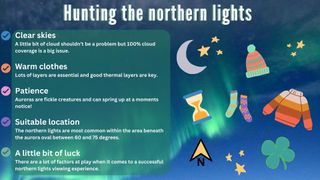
You can get an idea of how active the northern lights are likely to be in your area by keeping tabs on a short-term aurora forecast, such as the one provided by the Geophysical Institute . One predicting the next half hour is available on NOAA's Space Weather Prediction Website . Also, a citizen science website called Aurorasaurus gives on-the-ground instant information from aurora enthusiasts wanting to alert the community to new sky shows.
Join our Space Forums to keep talking space on the latest missions, night sky and more! And if you have a news tip, correction or comment, let us know at: [email protected].
Get the Space.com Newsletter
Breaking space news, the latest updates on rocket launches, skywatching events and more!
Daisy Dobrijevic joined Space.com in February 2022 having previously worked for our sister publication All About Space magazine as a staff writer. Before joining us, Daisy completed an editorial internship with the BBC Sky at Night Magazine and worked at the National Space Centre in Leicester, U.K., where she enjoyed communicating space science to the public. In 2021, Daisy completed a PhD in plant physiology and also holds a Master's in Environmental Science, she is currently based in Nottingham, U.K. Daisy is passionate about all things space, with a penchant for solar activity and space weather. She has a strong interest in astrotourism and loves nothing more than a good northern lights chase!
- Elizabeth Howell Staff Writer, Spaceflight
- Mike Wall Senior Space Writer
Save $400 on Unistellar smart binoculars: Early bird deal
Father's Day telescope deals: Save $400 on Unistellar smart telescopes
The Milky Way's last major act of galactic cannibalism was surprisingly recent
- dcr66 To be honest I have never paid explicitly for some tours to see Northern Lights. They are more visible than you think and you just need to know when. I do know people that pay $$ to go see these things in Norway. Then I showed them the pics I took from a plane window. If you are flying from North America to Europe the great circle route usually takes you up to Greenland and Iceland. If the flight is night time, then get a window seat on the left side of the plane. Don't sleep and keep your eyes peeled when you are up there. Very likely you will see the green curtains easily up near the horizon. My daughter despite never seen them before saw it flying to Europe. Same can be done if your route takes you over Anchorage Alaska, the right side of the plane. I used to see it all the time on the fueling stopover to Anchorage AK back in the 80s and 90s. Less likely these days except on certain China based airlines. The polar route from North America to Asia that goes over the North Pole. You should be able to see the green curtains on either side when you are in the artic circle. The Prairies in Canada but avoid the summer because you will be in astronomic twilight essentially. I lived in Winnipeg for some years in the 1980s and I see them all the time. All kinds including the white sheet that cover the whole sky and bright enough to read. Reply
- michael'Buzz'collins Yes, luckily some only have to travel a short distance out to your back door! As Recently the Aurora Borealis, thankfully (no clouds 🙏)was able to be viewed in NW Donegal, Eire As I recently saw the repeat of Alexander Armstrongs Iceland visit on RTE ( as I missed it on ch5) So wasn't expecting to see this wonderful cosmic display!! Here are a few pictures that people took from their backyard from Burtonport to Buncrana, Inc Churchill, As I see another Churchill featured below in Manitoba as if seeing the Northern Lights isn't enough, it's program on Ch4/BBC has featured it as it has the most concentration of polar bears too (, because of the ice melting!) https://www.facebook.com/162517790452520/posts/pfbid031eTNJrFWY791rydpEhMDQDUyvGh3pnKZfgwKsK7VRTYwjGdSXZoTHaFdSfUvQNUVl/?sfnsn=mo https://www.facebook.com/1580520814/posts/pfbid033woQiJnL5XpYNoweeEznauNbSjQNJDxSSMxvzE7RxrrxoAwS7kbrTYPnDvZHKgBRl/?sfnsn=mo Simply outta this world,so to say😇 Reply
- View All 2 Comments
Travel in Russia
3 day tour in moscow.
- 10-day tour in Moscow
- 5-day Tour in Moscow
- 7-day Tour Moscow-St. Petersburg
- 7-day Tour in Moscow
- Trips in St. Petersburg
- Trips in Nizhny Novgorod
- Excursions in Russia
- Daily Tours in Moscow
- Daily Tours in Petersburg
- Daily tours in Nizhny Novgorod
- MiG-29 Flights for civilians
- Incredible Trips in Russia
- Space Adventures
- Military Trips
Useful information
3-day tour in moscow.
- Price & Inclusions
PRICE REQUEST>>>
Here starts your vacations in Moscow . On completing customs, you will be met by our travel agency representative speaking multiple languages. He/she will help you reach your hotel. You will be transfered to the place by a vehicle of any class (on request). This is how you start your holidays in Moscow and holidays in Russia.
A sightseeing tour of Moscow in our vehicle will be made for you. Your tour of Moscow will take approximately 3 hours. You will be demonstrated most prominent historic places like world-known Red Square and green area of Alexander Gardens. Walk along Manezh square . Then you will drive past Sophia embankment the Cathedral of Christ the Savior and enjoy the incredible views of the Kremlin from Sophia embankment where the former British Embassy stands–itself and enjoy gorgeous looks of Kremlin , appreciate the size of the monument to Peter the Great and all charm of the House on the Embankment. Whole touring you will pass magnificent and world-renowned sites of Moscow as the Novodevishy Monastery with its Necropolis, a biggest cemetery of noted people. For sure the tremendous MGY building will impress you. Observation point at Sparrow Hills will open the view to all Moscow. A lot more of gorgeous places will be waiting for you! Among them there are Poklonnaya Hill, Kutuzov Avenue, New Arbat Street, Boulevard ring, and squares Theatre Square, Tverskaya Street and Pushkin Square . And remember that this is just the first day!
After reaching the hotel you will be helped to check-in. Then will have a great opportunity to taste Russian traditional food. Then you will be free until the following day to continue your exciting travel around Moscow .
There will be a substantial breakfast available to you at the hotel. Then while on holidays in Russia you will attend the biggest fortress of medieval time and at the same time cultural heart of Moscow, i.e. Kremlin . You travel assistant will arrange a meeting with guide who will show you beautiful Red Square . You will have an excursion made by our travel agency's travel guide inside the territory of Kremlin. You will have look at most important churches at Cathedral Square and check the collection of treasure items of Armory Chamber that were collected by tsars and patriarchs.
Then your will be transported to the hotel to have some free time.
In the evening to amuse you during your vacations in Russia we will offer as an options a 2 hour tour in bus through nighttime in Moscow . You can enjoy your time and see the most illuminated city of Europe in the flesh(starting at 11 pm).
This is the last day of your holidays in Moscow and tour in Russia. After breakfasting you are to check-out from the hotel. You will not go straight to airport. Firstly, we will invite you to see another important landmark of Russian culture. You will walk through Old Arbat Street (that once heard Napolean’s footsteps echo along the cobbles), which, now, is a pedestrian zone with numerous cafes, restaurants, museums, theatres, shops).
Finishing excursion you will have a quick snack and then straight to the airport to depart from Russia. We would be very happy to know your opinions and feelings on your travel in Russia and vacations in Moscow.
If you wish to see the price and what included into it click here .
Contact with us
For more details about the adventure travel please contact our office:
+7 (925) 500-77-82 WhatsApp
Impressions of our clients
Photogallery of flights, migs flight over russia.
- Aerobatics Experience MiG-29
- "Edge of Space" & Aerobatics in MiG-29
- Top Gun L-39 Rides
- Air Force Museum in Monino
- Unforgettable flying Tours
Space Adventure
- Baikonur Space Launch Tour
- Zero-Gravity Flight in IL-76 MDK
- Excursions to Star City
- Centrifuge Training
- Hydro-Space Training
- Space Flight Training
- Military Tours
The Most Popular Tours
- Moscow Sightseeing Tour
- Kremlin Tour and Armoury Chamber
- St. Petersburg Sightseeing Tour
- Hermitage Museum
- Amber Room, Tsarskoye Selo
- Eremitage St. Petersburg
- Peterhof Palace, St. Petersburg
- Catherine Palace and Amber Room
- Old Arbat Street + Moscow Metro
- Moscow Guide
- Moscow Kremlin FAQ
- Fighter Jets FAQ
- North Pole FAQ
- Cold War FAQ
- About Russia

- Share on Facebook
- Share on Twitter
- Share by Email
2024 Memorial Tournament money: Here’s how much every player made
- Follow on Twitter
Scottie Scheffler hits his tee shot on Saturday on the 16th hole at Muirfield Village Golf Club.
Getty Images
Adam Hadwin, a week ago, in his home country’s Canadian Open , didn’t cash. After rounds of 72 and 70, he missed the cut.
But things weren’t all bad.
He was also gifted something valuable.
A round with a pull cart.
He said last weekend he played Toronto Golf Club. No pressure. Just friends. Just pulling.
“I think every one of us [Canadians] always loves when we get north of the border,” Hadwin said this week. “Some of the other guys spend a little bit more time up there than I do. I’m rarely up there anymore. So it’s always nice to kind of cross and be amongst other Canadians, and obviously we get really good support.
“Yeah, it sucks to not play well, especially up there. I mean it sucks to miss cuts, but missing a cut in Canada is definitely up there with some of the worst. I got to spend some time with my mom, just kind of chill out, played Toronto Golf Club on Saturday, just relaxed.
“I was joking with the guys that I used a push cart around. I hadn’t done that in years, get back to what the game used to be for us growing up, just slugging it around yourself, hitting shots, having fun, enjoying company. The game can wear on you sometimes, and I think that I can lose sight of that sometimes with the best of ’em.”
Was playing that round, just pushing the push cart, helpful?
“Yeah, I think so,” said Hadwin, who entered Sunday’s final round of the Memorial tied for second. “I struggle sometimes to do those rounds. If I don’t play well, I kind of wonder why I’m out here. But, yeah, I think just kind of get back to what I used to do as a junior and as a young amateur when the game was not my livelihood and not how I paid bills or anything like that. Just go out and enjoy some good company and hack it around and hopefully hit a few good shots and kind of just enjoy the experience again.”
With that, you can check out the complete payout breakdown for this week’s Memorial, played at Muirfield Village Golf Club . The total purse is $20 million.
How much every player made at the 2024 Memorial
1. Scottie Scheffler $4 million
2. Collin Morikawa $2.2 million
3. Adam Hadwin $1.4 million
4. Christiaan Bezuidenhout $1 million
T5. Matt Fitzpatrick $766,666 Ludvig Aberg $766,666 Sepp Straka $766,666
T8. Hideki Matsuyama $579,000 Sungjae Im $579,000 Tony Finau $579,000 Xander Schauffele $579,000
T12. Nick Dunlap $430,333 Victor Perez $430,333 Sahith Theegala $430,333
T15. Billy Horschel $329,000 Sam Burns $329,000 Viktor Hovland $329,000 Si Woo Kim $329,000 Rory McIlroy $329,000
T20. Corey Conners $259,500 Tommy Fleetwood $259,500
T22. Alex Noren $200,200 Byeong Hun An $200,200 Akshay Bhatia $200,200 J.T. Poston $200,200 Max Homa $200,200
T27. Emiliano Grillo $143,500 Adam Svensson $143,500 Nick Taylor $143,500 Davis Thompson $143,500 Russell Henley $143,500 Seamus Power $143,500
T33. Taylor Pendrith $106,500 Justin Thomas $106,500 Matt Kuchar $106,500 Peter Malnati $106,500 Brian Harman $106,500 Jason Day $106,500
T39. Denny McCarthy $88,000 Austin Eckroat $88,000
T41. Thomas Detry $80,000 Will Zalatoris $80,000
T43. Tom Kim $72,000 Keegan Bradley $72,000
T45. Tom Hoge $60,500 Lee Hodges $60,500 Andrew Putnam $60,500 Eric Cole $60,500
49. Shane Lowry $54,000
T50. Cameron Young $51,500 Cam Davis $51,500
52. Jackson Koivun (amateur)
Latest In News
U.s. open-grade 'carnage' it arrived a week early this year, phil mickelson, pinehurst u.s. open and that beeper: jim ‘bones’ mackay opens up, the hidden reason why monday of u.s. open week is so much fun, 2024 u.s. open viewer's guide: tee times, tv schedule, streaming, nick piastowski.
Nick Piastowski is a Senior Editor at Golf.com and Golf Magazine. In his role, he is responsible for editing, writing and developing stories across the golf space. And when he’s not writing about ways to hit the golf ball farther and straighter, the Milwaukee native is probably playing the game, hitting the ball left, right and short, and drinking a cold beer to wash away his score. You can reach out to him about any of these topics — his stories, his game or his beers — at [email protected].
- Author Twitter Account
Related Articles
Jack nicklaus chokes up dedicating 2025 memorial to wife, barbara, scottie scheffler gets 5th 2024 win, 1st as a father, at the memorial, winner's bag: scottie scheffler's gear at the 2024 memorial, why jack nicklaus believes rory mcilroy hasn’t won a major in almost 10 years, 2024 memorial tournament purse: payout info, winner's share at muirfield village, 2024 memorial sunday tv coverage, streaming: how to watch round 4, 2024 memorial tournament sunday tee times: round 4 pairings , major winner was floundering. so his wife told him to sleep in driveway, 2024 memorial saturday tv coverage, streaming: how to watch round 3, watch, play, win.
Chirp Golf is your home for the best of real money Daily Fantasy Sports (DFS) and Free-To-Play games. Featuring simple to play. easy to learn, and fun games. Chirp Golf has something for every golf fan.
Scan to Download:
If we could look back at Earth from the vastness of the solar system, what would we feel? Wouldn’t squabbles look stupid from Saturn? Wouldn’t violence seem senseless from Venus? Forget about ‘Us and Them’, from the perspective of Pluto, it’s just US!

So, what exactly is Our Place in Space?
Centered around an epic scale model of the solar system designed by the artist Oliver Jeffers with scientist Professor Stephen Smartt and a creative team led by Nerve Centre, Our Place in Space is a sculpture trail of our solar system, interactive AR app and exciting learning and events programme (including our very own Minecraft world !)
Story behind the project
For centuries, we’ve defined ourselves by who we are and who we’re not. Which side we choose, on what ground we stand, who and what we fight for. But with distance and a view from afar, the distinction between Us and Them fades away. With distance comes perspective...
Watch our video to learn more about what inspired Oliver Jeffers and Professor Stephen Smartt to create Our Place in Space.
News View All
6 November, 2023
Our Place in Space Goes International, Prepares for Launch in Hanoi
17 October, 2023
Our Place in Space Shines at 2023 CIPR PRide Awards
27 June, 2023
Our Place in Space Minecraft world rockets to one million downloads
Creative team.

From an initial concept by Oliver Jeffers and Chris Haughton
Get In Touch
UNBOXED: Creativity is a once-in-a-lifetime celebration of creativity, taking place across England, Northern Ireland, Scotland, Wales and online from March to October 2022. We’re lifting the lid on 10 awe-inspiring new ideas, shaped across science, technology, engineering, the arts and mathematics by brilliant minds working in unexpected collaborations. Unmissable events and unforgettable experiences are coming to places and spaces right across the UK: from coastal towns and city centres to breathtaking areas of natural beauty.

2024 Total Eclipse: Where & When
Eclipse explorer.
For a mobile-friendly or full-screen version of this interactive map, visit go.nasa.gov/EclipseExplorer .
The Monday, April 8, 2024, total solar eclipse crossed North America, passing over Mexico, the United States, and Canada. The total solar eclipse began over the South Pacific Ocean. Weather permitting, the first location in continental North America that experienced totality is Mexico’s Pacific coast at around 11:07 a.m. PDT.
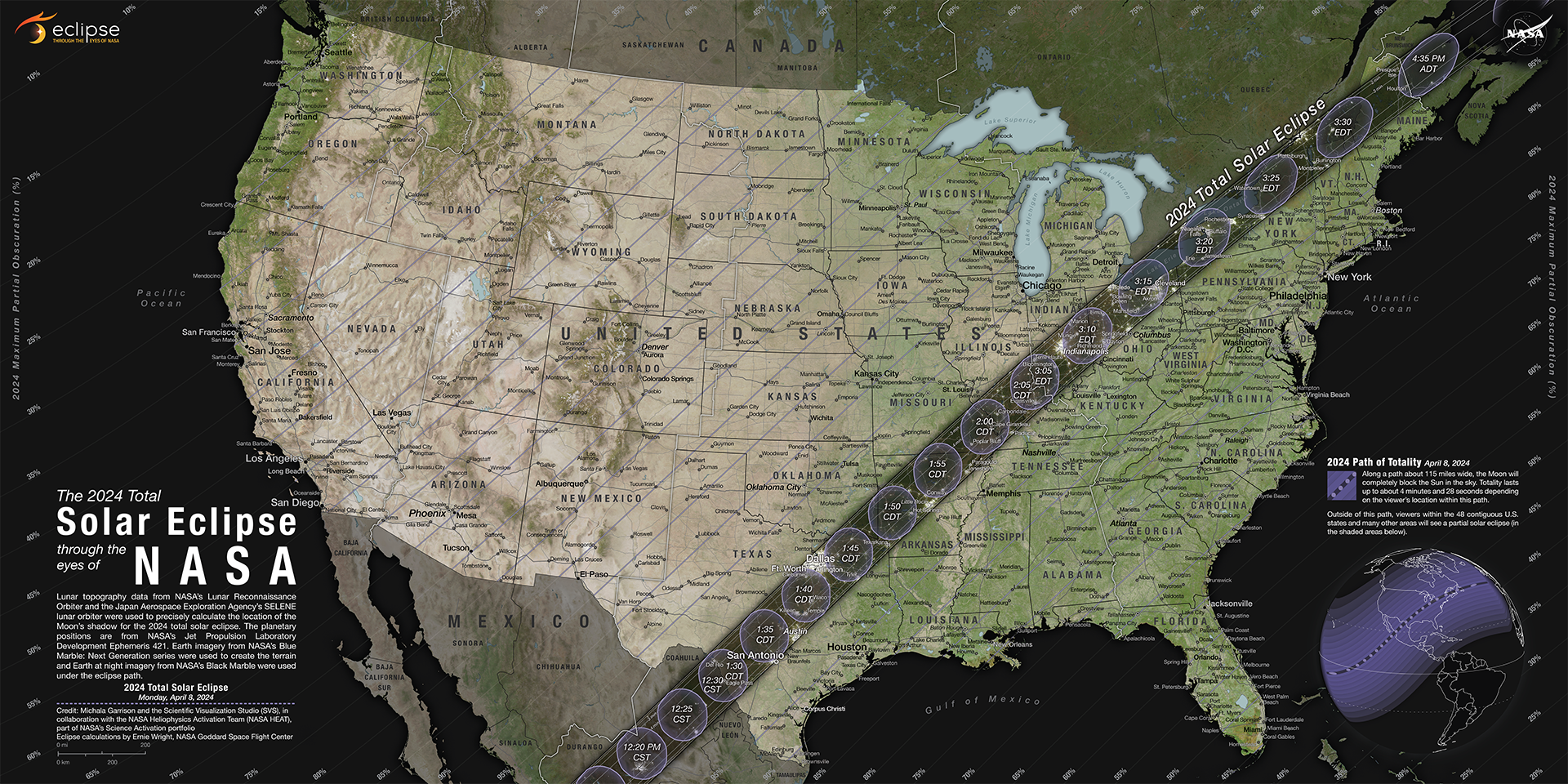
The path of the eclipse continued from Mexico, entering the United States in Texas, and traveled through Oklahoma, Arkansas, Missouri, Illinois, Kentucky, Indiana, Ohio, Pennsylvania, New York, Vermont, New Hampshire, and Maine. Small parts of Tennessee and Michigan also experienced the total solar eclipse. The eclipse entered Canada in Southern Ontario, and continued through Quebec, New Brunswick, Prince Edward Island, and Cape Breton. The eclipse exited continental North America on the Atlantic coast of Newfoundland, Canada, at 5:16 p.m. NDT.
This table provides the time that totality began in some U.S. cities in the path of totality. These areas also experienced a partial eclipse before and after these times.
Discover More Topics From NASA

Total Solar Eclipse Safety
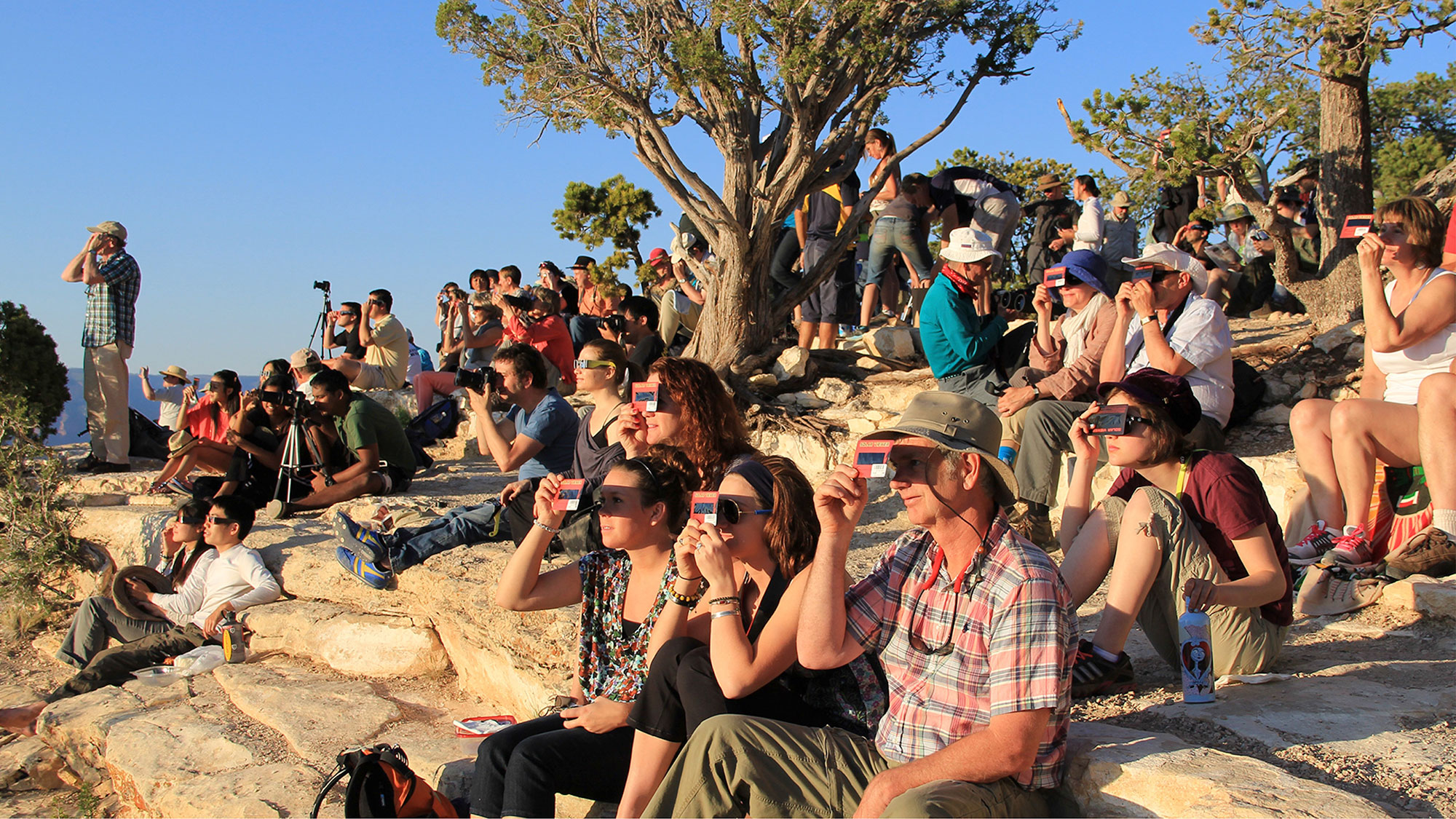
2024 Total Eclipse
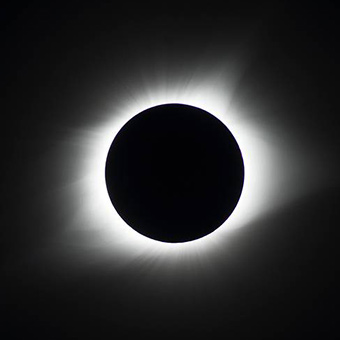
Helio Big Year
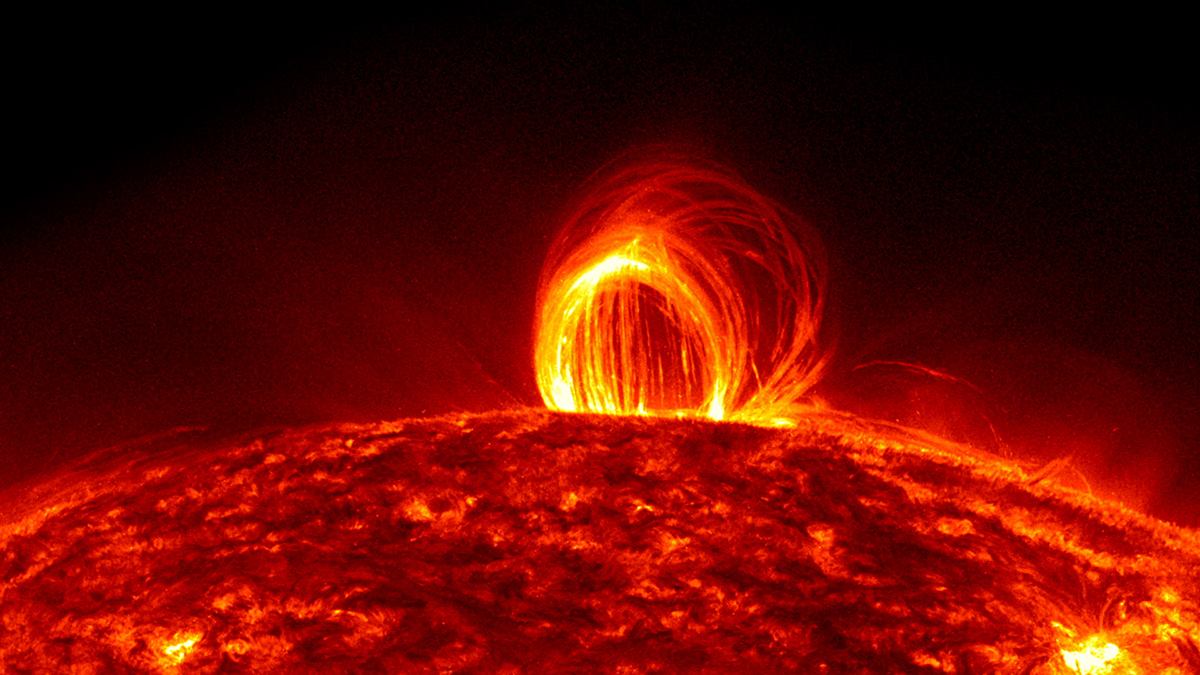
Scottie Scheffler continues dominant PGA Tour season with 1-stroke victory at the Memorial
Having already won this year at the courses famously connected to Arnold Palmer and Bobby Jones, two of the faces that would be etched on the Mount Rushmore of golf, Scottie Scheffler added winning at Jack’s Place, shooting a final-round 2-over-par 74 at Muirfield Village Golf Club in Dublin, Ohio on Sunday in the 2024 Memorial tournament . That was enough to hang on for a one-stroke victory, his 11th career PGA Tour title.
“It was a fun test of golf. I like it when it gets this hard,” Scheffler said. “I didn’t do a whole lot great today but I did enough to get it done.”
The only other player to win the Players Championship in March, the Masters in April and the Memorial in June in the same season? None other than Tiger Woods, another of the faces on the Mount Rushmore of golf, who won the first of five Memorials 25 years ago.
Ahead of the PGA Championship last month, Woods was asked to describe the tremendous run by Scheffler to become the dominant world No. 1 this season. “If he putts awful, then he finishes in the top 10. If he putts decent, he wins. He putts great, he runs away. He’s just that good a ball-striker and that good an all-around player.”
After entering the final round with a four-stroke edge, Scheffler was nursing a one-streak lead before he canned a 16-foot par putt at 16 to stretch his lead to two and despite a rocky finish, he held off Collin Morikawa, who closed in 71, his fifth top-5 finish this season, and chased him to the finish. Scheffler finished with a 72-hole aggregate of 8-under 280, his fifth win in his last eight starts, making him the first to win five times in a season since Justin Thomas seven years ago and the first to win five times before the U.S. Open since Tom Watson in 1980.
Scheffler opened with rounds of 67-68 to claim the 36-hole lead and managed to extend it by a stroke despite a triple-bogey on Saturday and three-putt bogey at 18. He signed for 71. Conditions during the final round remained tough on a sun-drenched day that turned greens brick hard. With a scoring average of nearly 75, it felt a little too much like the U.S. Open had come one week early.
“Muirfield Village is growling at the players today,” said CBS’s Trevor Immelman.
Scheffler made two bogeys on the front nine and just one birdie – at No. 6 – as Adam Hadwin made an early move before stumbling late and finishing alone in third (74).
“I had put a Band-Aid on the round for a long time,” said Hadwin “and the Band-Aid came off and it was carnage.” As a consolation prize, Hadwin did earn the one spot available into the British Open at Royal Troon in July to the top finisher not already qualified.
Morikawa (71) remained hot on Scheffler’s heels, especially after he drilled a 32-foot birdie putt at the par-3 12 th , his longest putt he had made since the first round of the PGA Championship, a span of 202 holes, to get within one.
Scheffler failed to answer at 12 from closer range, made a nervy short-range birdie stab at 13 and watched in disbelief as his ball spun out on 15. Although he punched his fist when he saved par at 16, Scheffler missed an 8-foot par putt at 17 to cut his lead in half. But he made an up-and-down from over the green at 18, pumping his right fist with gusto when his 5-foot putt for the win dropped. Morikawa, who also played in the final group with Scheffler at the Masters in April, had seen this movie before.
Asked what about Scheffler’s game impresses him, Morikawa said, “Everything. The guy could be off balance and the ball’s right down the middle of the fairway. Look, his ball striking is incredible. Growing up, his short game and putting was always amazing, but how good he hits his irons and the control he has is amazing. Distance control is key and it’s king and he’s got that.”
Scheffler’s topped the field in Strokes Gained: Tee-to-Green and Approach-the-Green and his putter was just good enough: he ranked 42nd in Strokes Gained: putting in the final round and 22nd for the week in the 73-man field, lending credibility to Tiger’s assessment of his game. In the end, Scheffler got the traditional winner’s handshake from the legendary Nicklaus that he had said before the tournament that he so desired.
“It would mean a lot to me to be able to shake his hand and win this golf tournament with all the history here and what Mr. Nicklaus has meant to the game.”
That wasn’t the only greeting Scheffler received behind the 18th green. Wife Meredith and baby Bennett were there to congratulate him on daddy’s first win as a parent.

All About the Sun

Credit: NASA/JPL-Caltech
A star is a hot, glowing ball of gas. When you look up in the night sky, you can see countless twinkling stars. Can you see any stars during the daytime? Of course! The light of daytime comes from our closest star: the Sun.
Explore the Sun! Click and drag to rotate the Sun. Scroll or pinch to zoom in and out. Credit: NASA Visualization Technology Applications and Development (VTAD)
Just how close is the Sun to Earth? Way, way closer than other stars, but still pretty far away. It’s approximately 93 million miles away from Earth. That’s 400 times farther than the distance between Earth and the Moon!
However, it’s a good thing that Earth isn’t too close to the Sun. If we were too close, it would be way too hot to live here. The Sun’s surface is very hot, and its atmosphere is even hotter. And the Sun’s core is the hottest part of all, at a sizzling 27 million degrees Fahrenheit!
Our Sun is about 100 times wider than Earth, but it is just an average sized star . Astronomers have found some stars that are 100 times bigger than the Sun and others that are 10 times smaller.

The Sun is also right in the middle of its lifecycle. Right now, our Sun is in a stage called yellow dwarf. It is about 4.5 billion years old . In another 5 billion years the Sun will become a big, cool star called a red giant. A few billion years after that, it will become a small white dwarf star. It will shrink to around the same size as Earth, but it will weigh 20,000 times more.

Click the above image to expand it. Our Sun is in the middle of its lifecycle. It is a yellow dwarf star. Credit: NASA/JPL-Caltech
But even though our Sun is kind of an ordinary star, there are also a few things that make our Sun quite special. For example…
We can’t live without the Sun!
Life on Earth depends on the Sun. Here are just a few reasons why:
- The Sun’s gravity holds our entire solar system together. Our solar system is even named after the Sun (the Latin word for Sun is “sol”).
- Heat from the Sun makes Earth warm enough to live on.
- Without light from the Sun, there would be no plants or animals—and, therefore, no food and we wouldn’t exist.

Heat and light might be important for life on Earth, but the Sun sends other stuff, too. The Sun sends lots of other energy and small particles toward Earth. Earth’s protective magnetic field and atmosphere shields us from most of the energy and particles. But sometimes a big stream of these particles reaches Earth and interacts with the gases at the outer edge of our atmosphere. This causes streams of light in the sky, called auroras .
The Sun’s Neighbors
In our solar system, the closest planet to the Sun is Mercury. Our Sun’s closest star neighbor is called Proxima Centauri. It is approximately 4 light-years away.
What does the Sun look like?
First of all, you should never look directly at the Sun without very special protective eyewear. But NASA has many great pictures of the Sun for you to look at! Scientists use telescopes with filters to capture images of the Sun. These images help us learn about our star. The photo below was taken by a NASA spacecraft called the Solar Dynamics Observatory.

This image captured by NASA's Solar Dynamics Observatory on June 20, 2013, shows the bright light of a solar flare on the left side of the Sun. Credit: NASA/SDO
Have any spacecraft visited the Sun?
A spacecraft would easily burn up if it tried to fly into the Sun. However, NASA’s Parker Solar Probe is flying closer than any other robotic explorer ever has. It will be flying inside the Sun’s atmosphere, or corona . This spacecraft will help us learn more about how the Sun works and how solar activity starts. This helps us to be more prepared!
More fun facts about the Sun!
- The Sun goes through ups and downs in activity like solar flares. It gets more active with more sunspots and then less active over a period of 11 years. This is called the solar cycle .
- The Sun has been getting slowly brighter since it was born. A couple of billions of years ago, the Sun was a little dimmer than it is now.
- The Sun contains almost ALL of the material in our solar system. 99% of it. All the planets, asteroids and comets add up to less than 1% of the total.
- The Sun is so far away that it takes light about 8 minutes and 20 seconds for it to get to us – and light is the fastest thing in the universe.
For more information visit:
NASA Science
Explore the Solar System
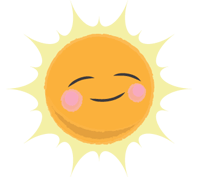
If you liked this, you may like:

Gaia: Milky Way’s last major collision was surprisingly recent
Our galaxy has collided with many others in its lifetime. ESA’s Gaia space telescope now reveals that the most recent of these crashes took place billions of years later than we thought.
The Milky Way has grown over time as other galaxies have approached, collided with, and been torn apart and consumed by our galaxy. Each collision triggered wrinkles that still ripple through different families of stars, affecting how they move and behave in space.
One of Gaia’s aims is to unravel the history of our galaxy by studying these wrinkles – something it’s doing by pinpointing the positions and motions of over 100 000 stars near to our own, a tiny fraction of the about two billion sources it observes.

“We get wrinklier as we age, but our work reveals that the opposite is true for the Milky Way. It’s a sort of cosmic Benjamin Button , getting less wrinkly over time,” says Thomas Donlon of the Rensselaer Polytechnic Institute and University of Alabama in Huntsville, USA, and lead author of the new Gaia study. “By looking at how these wrinkles dissipate over time, we can trace when the Milky Way experienced its last big crash – and it turns out this happened billions of years later than we thought.”
These galactic wrinkles were only found by Gaia in 2018. This study is the first to accurately determine the timing of the collision that made the wrinkles, by comparing observations with cosmological simulations.
Strange motions
The Milky Way’s halo contains a large group of stars with unusual orbits, many of those thought to have been adopted into our galaxy during an event that astronomers call the ‘last major merger’. As the name suggests, this is the last time our galaxy experienced a significant collision with another galaxy – proposed to be a massive dwarf galaxy that flooded the Milky Way with stars that pass very close to our galaxy’s centre.
Scientists had dated this merger to between eight and eleven billion years ago, when the Milky Way was in its infancy, and it is known as Gaia-Sausage-Enceladus (GSE). But data from Gaia – released as part of the telescope’s Data Release 3 in 2022 – now suggests that another merger may have delivered the unusually moving stars.

“For the wrinkles of stars to be as clear as they appear in Gaia data, they must have joined us less than three billion years ago – at least five billion years later than was previously thought,” adds co-author Heidi Jo Newberg, also of Rensselaer Polytechnic Institute. “New wrinkles of stars form each time the stars swing back and forth through the centre of the Milky Way. If they’d joined us eight billion years ago, there would be so many wrinkles right next to each other that we would no longer see them as separate features.”
The finding suggests that rather than these stars originating from the ancient GSE merger, they must have come from a more recent event dubbed the Virgo Radial Merger, which took place less than three billion years ago.
Rewriting history
There is evidence for the GSE merger taking place far back in the Milky Way’s history. However, recent work has questioned whether a massive ancient merger is actually needed to explain the properties of the Milky Way as we see it today, and whether all of the stars originally associated with the GSE are from the same merger event.
In 2020, Thomas led the study that identified wrinkles of stars in the Milky Way, and compared these to simulations of different possible mergers. “We can see how the shapes and number of wrinkles change over time using these simulated mergers. This lets us pinpoint the exact time when the simulation best matches what we see in real Gaia data of the Milky Way today – a method we used in this new study too,” says Thomas. “By doing this, we found that the wrinkles were likely caused by a dwarf galaxy colliding with the Milky Way around 2.7 billion years ago. We named this event the Virgo Radial Merger.”
Since then, Thomas and colleagues have further explored this merger, slowly refining the idea that many of the oddly moving stars and debris in the Milky Way’s inner halo were delivered to our galaxy from a much more recent galaxy collision than the GSE. They have also clarified that the stars originally associated with the GSE may have originated from multiple mergers, some ancient.
“The Milky Way’s history is constantly being rewritten at the moment, in no small part thanks to new data from Gaia,” adds Thomas. “Our picture of the Milky Way's past has changed dramatically from even a decade ago, and I think our understanding of these mergers will continue to change rapidly.
“This result – that a large portion of the Milky Way only joined us within the last few billion years – is a big change from what astronomers thought up until now. Many popular models and ideas about how the Milky Way grows would expect a recent head-on collision with a dwarf galaxy of this mass to be very rare.”
It’s likely that the Virgo Radial Merger brought in a family of other small dwarf galaxies and star clusters with it, which would have all joined the Milky Way at around the same time. Future exploration will reveal which of these smaller objects that were previously thought to be related to an ancient GSE are actually related to a more recent Virgo Radial Merger instead.
Incredible collaboration
This finding joins a stream of results from Gaia that are rewriting the history of our cosmic home. The space telescope is uniquely placed to explore the myriad stars in our skies, and has compiled an unrivalled dataset of the positions, distances and motions of around 1.5 billion stars to date.
“Gaia is a hugely productive mission that’s transforming our view of the cosmos,” says Timo Prusti, Project Scientist for Gaia at ESA. “Results like this are made possible due to incredible teamwork and collaboration between a huge number of scientists and engineers across Europe and beyond.”
“This finding improves what we know of the many complicated events that shaped the Milky Way, helping us better understand how galaxies are formed and shaped – our home galaxy in particular.”
Notes for editors
‘The Debris of the ‘Last Major Merger’ is Dynamically Young’ by Donlon et al. (2023) is published in Monthly Notices of the Royal Astronomical Society . https://doi.org/10.1093/mnras/stae1264
The study uses data from Gaia’s Data Release 3: https://www.cosmos.esa.int/web/gaia/dr3
ESA’s Gaia space telescope was launched on 19 December 2013 and has been surveying the skies since 2014. In this time, the mission has flipped our understanding of the Milky Way on its head, unveiling its shape and structure and revealing how mergers have affected the stars that call our galaxy home. Read more about some of the telescope's key achievements .
For more information, please contact:
ESA Media Relations
Email: [email protected]
Thank you for liking
You have already liked this page, you can only like it once!
Related Articles
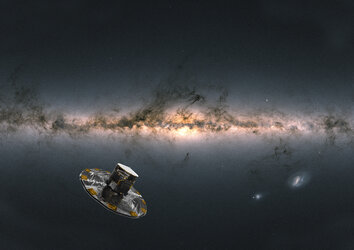
Gaia’s decade of discoveries: unravelling the intricacies o…
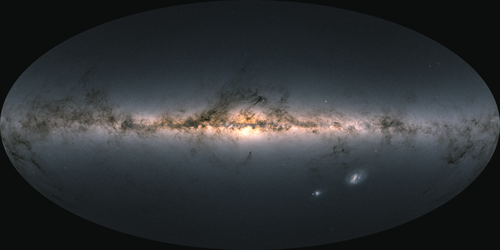
Gaia factsheet
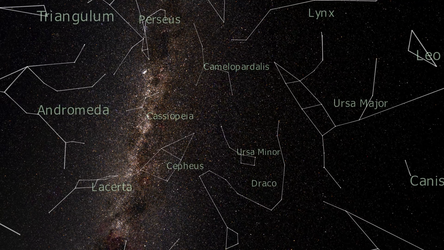
How does Gaia study the Milky Way?

COMMENTS
U.S. Space & Rocket Center. One Tranquility Base. Huntsville, AL 35805. (256) 837-3400. 1-800-637-7223. (256)721-7114. [email protected]. The fan-favorite planetarium show "Our Place in Space" is newly refreshed! Join the INTUITIVE Planetarium on an epic guided tour of our solar system with new images captured by missions like Juno and ...
Our 8.1 km scale model of the solar system animated Liverpool City Centre from 14 October to 6 November 2022. Beginning at the Sun on Church Street, make your way along the city's iconic waterfront and Trans Pennine Trail before finishing in Otterspool where Pluto awaits. Our Place in Space | Liverpool Trail. Watch on.
The Our Place in Space augmented reality app is now available on both Google Play and the Apple App Store. It's going to augment your reality in ways you really didn't expect! Use the app to support your visit to the trail or experience it from anywhere on Earth. Track your steps through the solar system, collect space souvenirs and upload ...
What is our place in space? Centred around an epic scale model of the solar system, designed by Oliver Jeffers and scientist Professor Stephen Smartt, with a creative team led by Nerve Centre, Our Place in Space is a three-dimensional sculpture trail, interactive AR app, and exciting learning and events programme. The Our Place in Space sculpture trail is a 591million to one scale model and ...
Bringing our solar system down to earth. During a spectacular voyage in 2022, we brought the solar system to Derry~Londonderry, Belfast, Cambridge and Liverpool. In Feb 2023 we launched in North Down where The Sun to Mars has since found a home as an exhibition in the Ulster Transport Museum. In Nov '23 we officially went international ...
Our Place in Space: Church Street to Otterspool, Liverpool (14 October — 6 November 2022). Liverpool has been announced as an additional stop on the UK tour of Our Place in Space, a recreation of the solar system as a stunning 8.1 km sculpture trail designed by artist Oliver Jeffers, astrophysicist Professor Stephen Smartt and a creative team led by Nerve Centre.
Liverpool has been announced as an additional stop on the UK tour of Our Place in Space, a recreation of the solar system as an 8.1 km sculpture trail designed by artist Oliver Jeffers, astrophysicist Professor Stephen Smartt and a creative team led by Nerve Centre in Derry-Londonderry. Bringing the installation to the north west of England ...
Its spacecraft have flown to every planet and the Sun in a quest to understand our place in the universe, and to search for the possibility of life beyond Earth. NASA's Johnson Space Center Virtual Tour: NASA's Johnson Space Center in Houston is home to mission control and astronaut training. It also leads International Space Station ...
Art installation of Our Place in Space in Chiavenna. Credit: ESA/Hubble, M. Jäger. The exhibition was on display in the medieval town of Chiavenna, Italy, from 13 May to 20 August 2017 at the Convento dei Cappuccini, Piazza Bertacchi. The exhibition was open 6 days per week, from Tuesday to Sunday. The opening hours were 10:30 to 12:30 in the ...
Liverpool has been announced as an additional stop on the UK tour of Our Place in Space, a recreation of the solar system as a stunning 8.1 km sculpture trail designed by artist Oliver Jeffers, astrophysicist Professor Stephen Smartt and a creative team led by Nerve Centre. Following popular visits to Derry-Londonderry, Belfast and Cambridge ...
Our Place in Space 2022. Watch on. The sculpture trail then moved on to Belfast and Divis/Black Mountain, a popular National Trust walking spot with outstanding panoramic views of Belfast Lough. The trail opened on 11 June, concluding on 10 July. After a detour to Cambridge and Liverpool in the autumn, the trail will return to Northern Ireland ...
#ad Let's explore 'Our Place in Space!' - www.ourplaceinspace.earth An out-of-this-world experience that sees you journey through the solar system, stopping ...
EXPLORE the fabulous Our Place in Space Sculpture Trail on its final weekend before it jets off into orbit. The Liverpool City Region was selected as part of a UK tour to host a recreation of the solar system as a stunning 5 Mile Sculpture Trail designed by renowned artist Oliver Jeffers, Astrophysicist Professor Stephen Smartt and a creative team led by Nerve Centre.
Family Tours with Dr Matthew Bothwell. Take a tour from the Sun to Saturn with Dr Matthew Bothwell, and learn all about our Solar System. This is an opportunity for you to have a conversation with Matthew and ask all your space related questions. Saturday 6 August @ 12pm-1.30pm. Thursday 18 August @ 7pm-8.30pm.
1. Star City. Star City Moscow Flag. Star City (or Zvyozdni Gorodok in Russian) is the training center where Russian cosmonauts were trained to be the first to get to space. Since the end of the 60s, this training center is called Yuri Gagarin (abbreviated GCTC ), in memory of the first cosmonaut to travel to outer space.
In the seven months since it launched, Our Place in Space set a new Guinness World Record for the most people dressed as an astronaut (716) while a series of wide-ranging live events and talks featured award-winning artists, a NASA astronaut, a Nobel Prize winner, actor Jamie Dornan and the late Baroness Blood, and was attended by 156,000 people. In addition, the augmented reality app created ...
Our planetary system is the only one officially called "solar system," but astronomers have discovered more than 3,200 other stars with planets orbiting them in our galaxy. That's just how many we've found so far. There are likely to be many more planetary systems out there waiting to be discovered! Our Sun is just one of about 200 ...
September 28 th, 1967. The Soviet government initiates the creation of the Museum of Cosmonautics at the foot of the Monument "To the Conquerors of Space'' in memory of the nation's achievements in space exploration. The Museum of Cosmonautics opens its doors to public on April 10, 1981, on the 20th anniversary of the first manned space flight.
New exhibit opening June 2024! Imagine living in a place where the night sky is always clear and sparkles with countless stars, and every day the entire world shines outside your windows. On June 8, 2024, The Museum of Flight premieres Home Beyond Earth, an immersive new exhibition that goes to the heart of the human experience of living in space.
The Northern Lights Company based in stunning Vesterålen, Norway, offers various 4, 5 or 7-night northern lights trips between September and April. All tours include transport, accommodation ...
On completing customs, you will be met by our travel agency representative speaking multiple languages. He/she will help you reach your hotel. You will be transfered to the place by a vehicle of any class (on request). This is how you start your holidays in Moscow and holidays in Russia. A sightseeing tour of Moscow in our vehicle will be made ...
Wow! Three days, that's not nothing, I mean, it's more like something! We will be able to cover a lot. How about the first day we dedicate to the city centre — all the main places, "must-sees" so called. So you can finally bring it down from your shoulders and settle your mind — you are in Moscow, from now on it will become only more interesting. The second day, I think, we should dedicate ...
Here's when StarWalk.space predicts the next six- and 7-planetary alignments will happen: June 3: Six planets - Mercury, Mars, Jupiter, Saturn, Uranus and Neptune.
How much every player made at the 2024 Memorial. 1. Scottie Scheffler $4 million. 2. Collin Morikawa $2.2 million. 3. Adam Hadwin $1.4 million. 4. Christiaan Bezuidenhout $1 million.
Our Place in Space was originally conceived through a research and development project as part of UNBOXED: Creativity in the UK and co-commissioned by Belfast City Council. UNBOXED: Creativity in the UK was designed to celebrate creativity and innovation, with funding from the Northern Ireland Executive, UK Government, Scottish Government and ...
NASA's Scientific Visualization Studio. The Monday, April 8, 2024, total solar eclipse crossed North America, passing over Mexico, the United States, and Canada. The total solar eclipse began over the South Pacific Ocean. Weather permitting, the first location in continental North America that experienced totality is Mexico's Pacific coast at ...
Morikawa (71) remained hot on Scheffler's heels, especially after he drilled a 32-foot birdie putt at the par-3 12 th, his longest putt he had made since the first round of the PGA Championship ...
The Sun contains almost ALL of the material in our solar system. 99% of it. All the planets, asteroids and comets add up to less than 1% of the total. The Sun is so far away that it takes light about 8 minutes and 20 seconds for it to get to us - and light is the fastest thing in the universe.
Our galaxy has collided with many others in its lifetime. ESA's Gaia space telescope now reveals that the most recent of these crashes took place billions of years later than we thought. The Milky Way has grown over time as other galaxies have approached, collided with, and been torn apart and consumed by our galaxy.